The nights may be drawing in and temperatures dropping, but there is still so much to see. Golden leaves, delicate fungi and migrant wildfowl in all their finery – it’s time to embrace autumn.
Apple (Malus)
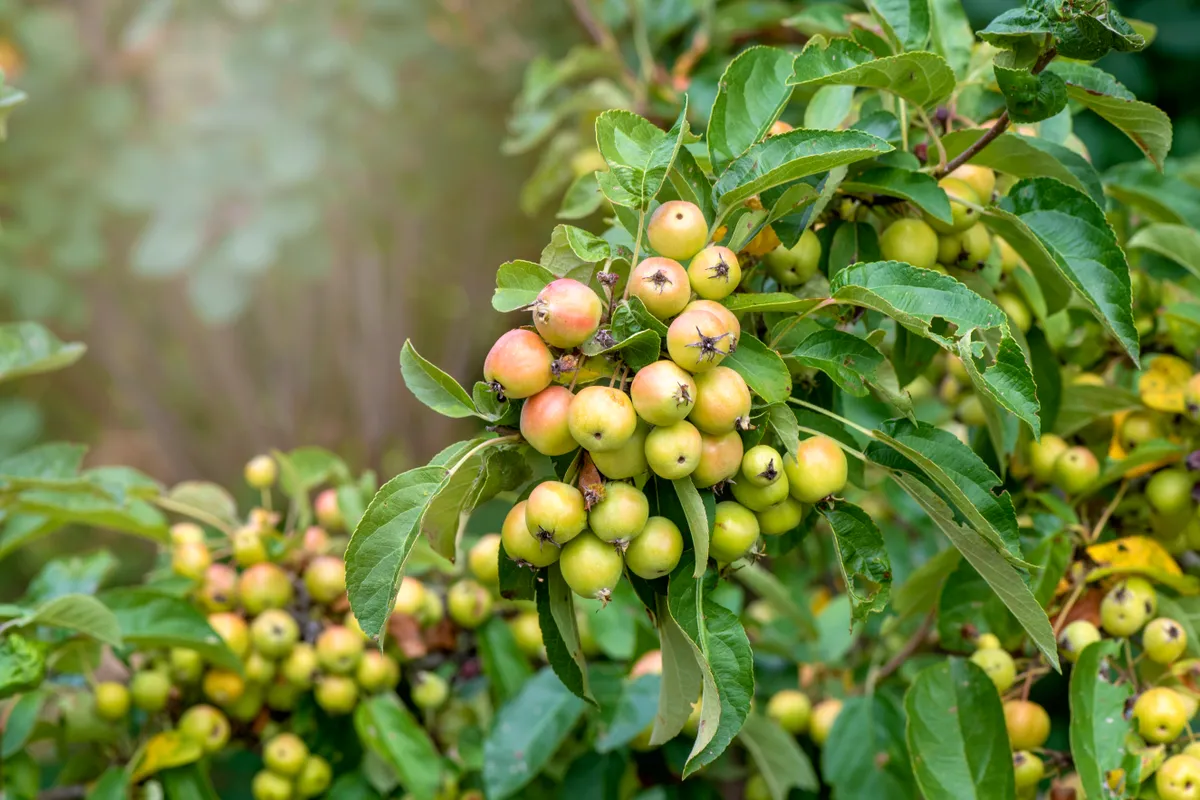
October marks the official start of the British apple season, and since the 1990s, 21st October has been celebrated as Apple Day, with events held around the UK.
Windfall apples left to rot on the ground do not go to waste, however, because the fruit nourish an entire ecosystem, the sweet, fermenting juices attracting a host of scrumpers, from the last of the year’s wasps to butterflies, earwigs, thrushes, badgers, foxes and small mammals.
Apple trees themselves are great for birds and insects, particularly as they become gnarly with age. Nuthatches and treecreepers will feed on insects hiding under the bark and woodpeckers will often make their nest in old rotten holes.
Europe’s native apple is the crabapple, with its smaller, tarter fruit. Domestic apple trees, found in orchards and gardens, originate in Kazakhstan. Yet they have been cultivated so long, there are at least 2,000 apple varieties in England alone.
Pallas's warbler (Phylloscopus proregulus)
A gem of a bird, tiny-billed and not much larger than a goldcrest, Pallas’s warbler spends its summer flitting through pine, spruce and larch woods on mountains in the Siberian taiga. It seems a miracle that it should ever turn up in Britain. Yet reports of this hyperactive forest sprite, named after German zoologist and explorer Peter Simon Pallas, are on the up. While still extremely rare, it now averages 60 records every autumn. Most come in October, usually along eastern and southern coasts.
But why is the gorgeous, leaf-green and lemon-yellow warbler here at all? There are a couple of theories: the species moves to southern China and South-East Asia for the winter, and it’s thought that a handful get caught in fast-moving depressions and are forced far to the west instead. Or perhaps the migrants become disoriented, which might explain why British sightings do not always coincide with unfavourable weather systems en-route.
Red deer (Cervus elaphus)
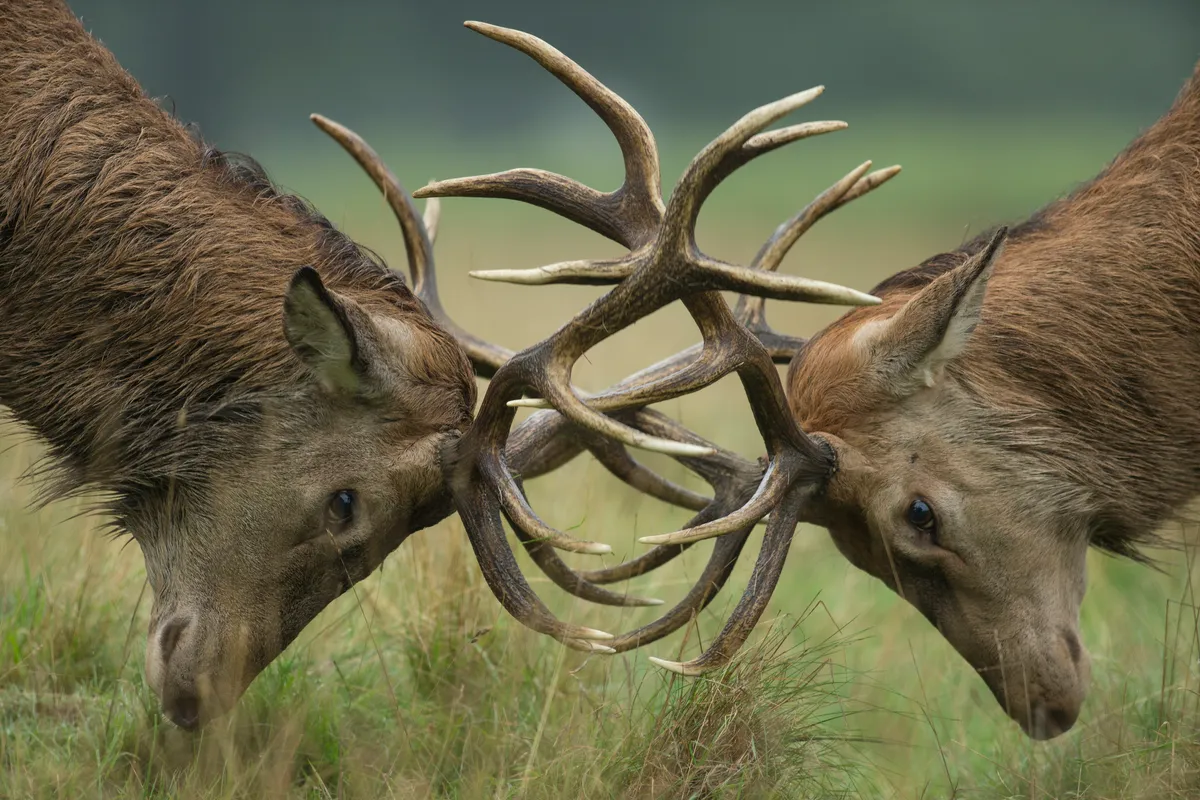
October’s inexorably shortening day length – biologists call it the photoperiod – is what triggers the red deer rut. Pumped with testosterone, mature stags strike out in search of groups of receptive hinds. At dawn and dusk, they bellow and grunt to stake their claim. Though the rut is mostly bluster, battles between well-matched stags can be bloody.
Learn more about deer:
Common crane

The tallest wild birds in Europe at about 1.2m, common cranes have a distinctively slow yet somehow self-important stride. They have been doing well in our recovering wetlands and 2021 was their best breeding year since recolonising Britain in the 1970s, after a 400-year absence. In autumn, the birds form post-breeding flocks, in which the brownish juveniles stick near their parents.
Polypod fern (Polypodium vulgare)

In autumn and winter, our temperate rainforests look lusher than ever compared to other woods. Found on the dampest western coasts of Britain and Ireland, often on steep or exposed slopes facing the Atlantic, these wild and wet forests are unlike anything else in these islands. Evergreen ferns, mosses, lichens and liverworts of many different kinds cover the ground and trees.
One of the most obvious species is the polypody fern, which has thick, glossy green fronds divided into leaflets like fat fingers, up to 20 or so on each side of the central stalk. The rows of ochre-coloured spots under the fronds are sori – structures that contain spores. If you see this distinctive fern growing on mossy tree trunks and branches, it’s a pretty good sign you are in a temperate rainforest. Conservationists are raising awareness of this precious, threatened habitat to improve protection of the patches that remain.
Sloe (Prunus spinosa)
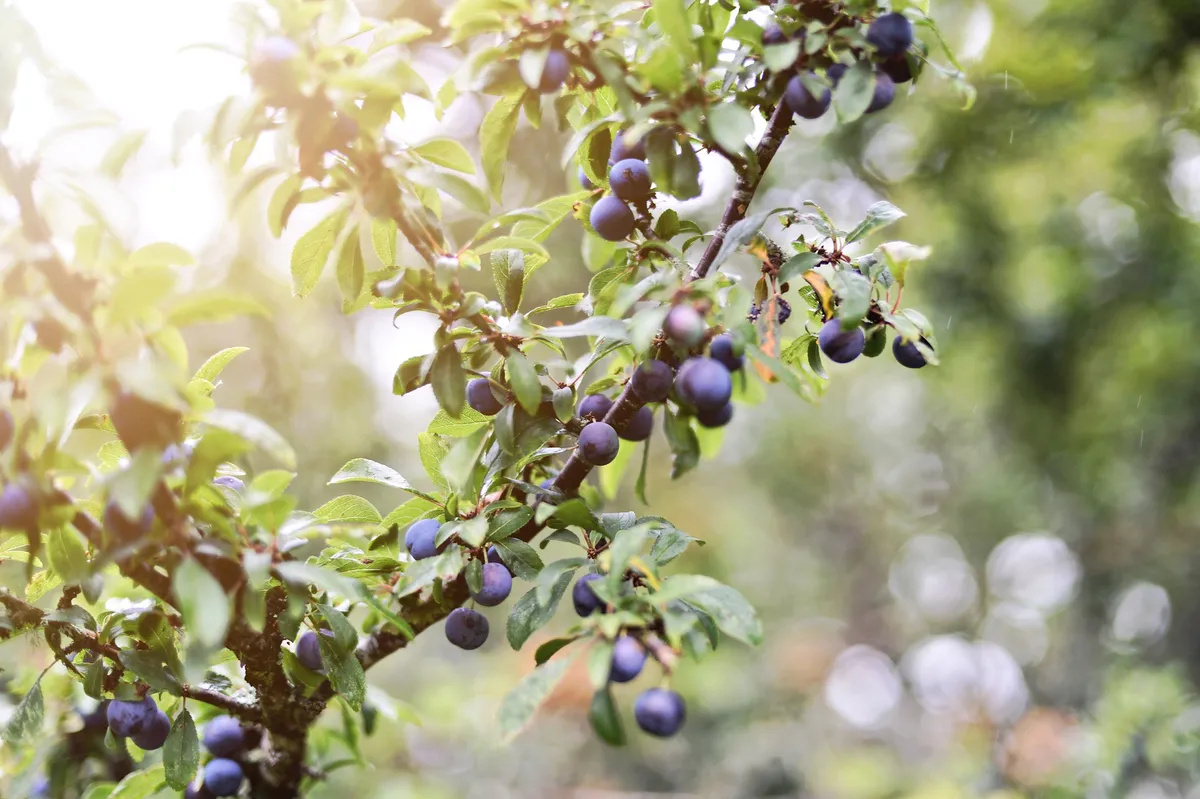
Sloes are the fruit of the blackthorn, one of the commonest and most widespread hedging trees on account of its dense growth. October is traditionally when they are finally ripe enough for us to pick.
They look like small, dark plums, with an attractive bluish-purple sheen – but don’t try one straight off the tree. Its intense, eye-watering tartness will almost certainly make you splutter and spit it out. Even birds normally leave sloes untouched, much preferring hawthorn, holly and mountain ash berries. Three species that will eat them are mistle thrushes, fieldfares (winter visitors from the far north) and hawfinches.
Heavily sweetened, of course, sloes go famously well with gin, and are excellent too in whisky, port and grown-up chocolate. Unfortunately, excessive and frequent flailing of hedges can lead to a much reduced crop, or even no sloes at all.
Silver birch (Betula pendula)

Among our native trees, the silver birch puts on one of the most spectacular autumn displays. Golden leaves provide a beautiful contrast with pale, peeling bark, enhanced by the dappled effect created by the tree’s naturally open and airy structure. In a breeze, the burnished foliage dances and shimmers. Birch was known as the ‘lady of the woods’ in Irish Gaelic poetry, and more recently, in Coleridge’s romantic poems.
This isn’t a large or long-lived tree. Many birches don’t see out a century; some will already show signs of rot and decay in their sixth decade. Their importance to the landscape comes not through longevity, but as environmental pioneers: birch saplings are often the first trees to colonise open areas. In the distant past, birch forest sprang up across the British Isles as the ice sheets retreated.
Nowadays, this pioneering role is reprised as birches quickly take advantage of new road verges, railway cuttings and brownfield sites. They also march up hillsides, taking over from other trees as the ground gets steeper and more exposed – and, were it not for the browsing of sheep, would grow higher still.
In autumn, the branches of birch trees are full of dark red mature female catkins packed with tiny seeds. These attract roving flocks of finches, especially redpolls and siskins.
Northern pintail (Anas acuta)
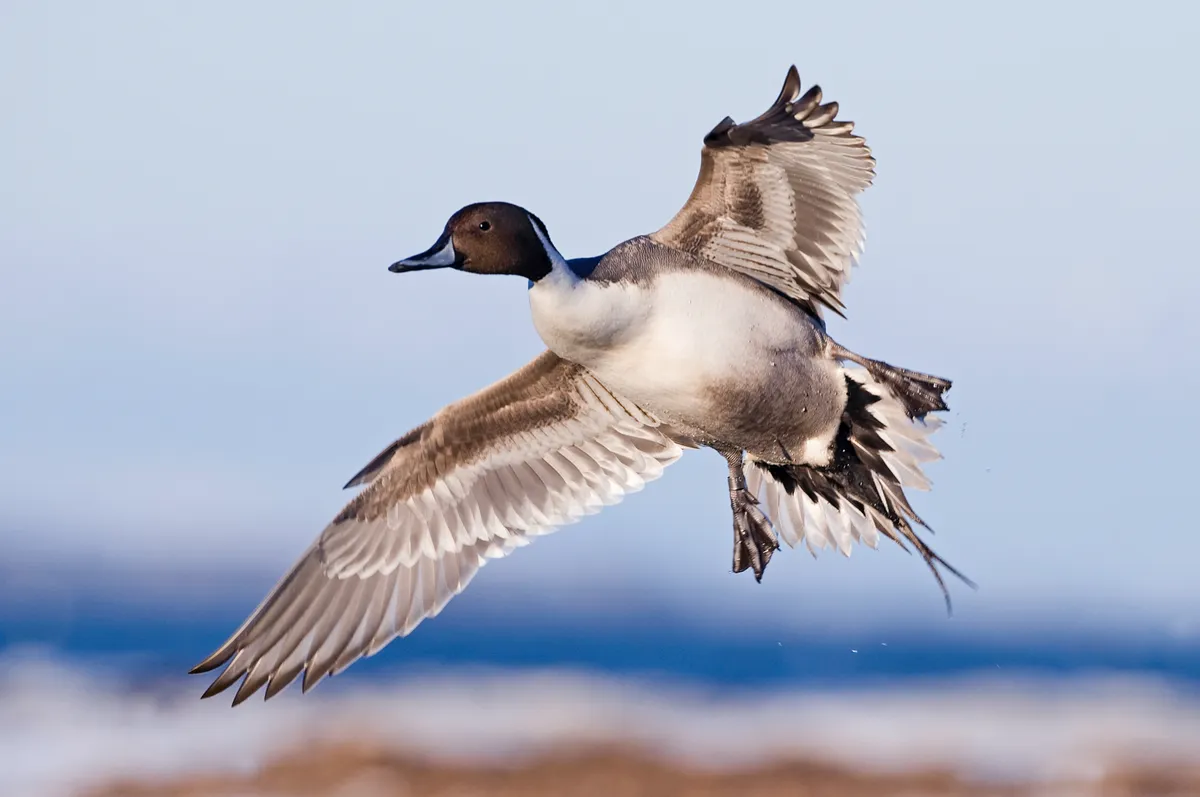
October sees wildfowl begin arriving from the north and east, swelling the flocks of resident ducks, geese and swans. They include pintails, which mostly come from western Russia. Some of our best-looking ducks, male pintails have a long neck and a pair of extremely long central tail feathers, which give them a uniquely rakish profile.
Females lack these and are also much plainer, but usually mix with the drakes, so can be identified by association. Look for pintails on estuaries and coastal pools, including on the sea itself.
Learn more about ducks:
Ballerina waxcap (Hygrocybe calyptriformis)
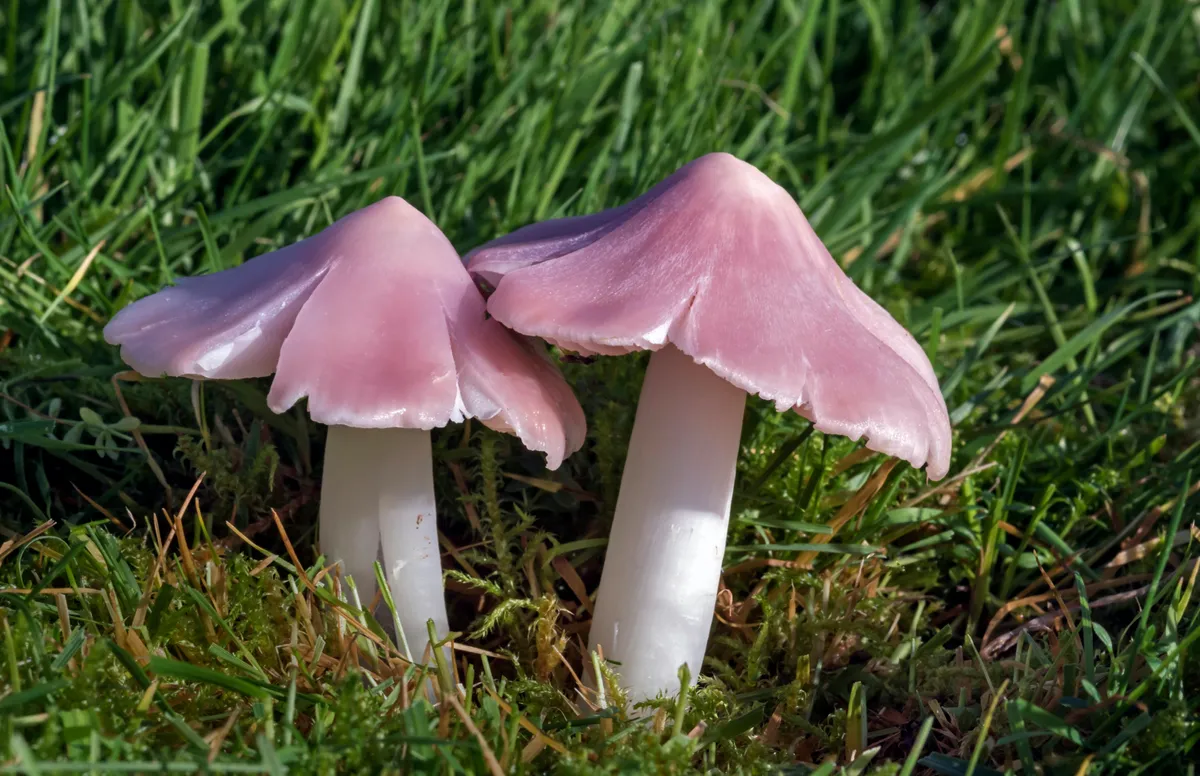
Behold a mushroom in a tutu. This pretty species, also known as the pink wax cap, has a pointed cap with a delicate upturned skirt, in the most gorgeous shade of soft pink. The cap soon starts to fray and fracture, but a fresh specimen is spectacular. Sometimes you will come across several together: a veritable dance troupe.
While the ballerina waxcap looks like nothing else, other members of its rainbow-coloured family can be tricky to separate. All waxcaps prefer wild, damp grassland – grazed, but not fertilised or reseeded. They are a sure sign of nature-friendly farming.
Sea buckthorn (Hippophae rhamnoides)

With its bright orange fruit, sea buckthorn bucks the trend for red and black berries this month. Garlands of golden berries form heavy clusters on its thorny branches. They are popular with migrant fieldfares, redwings and blackbirds that have just made landfall from Scandinavia.
Though sour, they can also give a colourful twist to juices and cocktails. Sea buckthorn is a tough shrub, whose silvery foliage (reminiscent of olive trees) thrives in salty coastal air. It grows in dense thickets over sand dunes, especially along the east coast, but is widely planted elsewhere to stabilise eroding slopes.
Learn more about berries and foraging:
Wild boar (Sus scrofa)
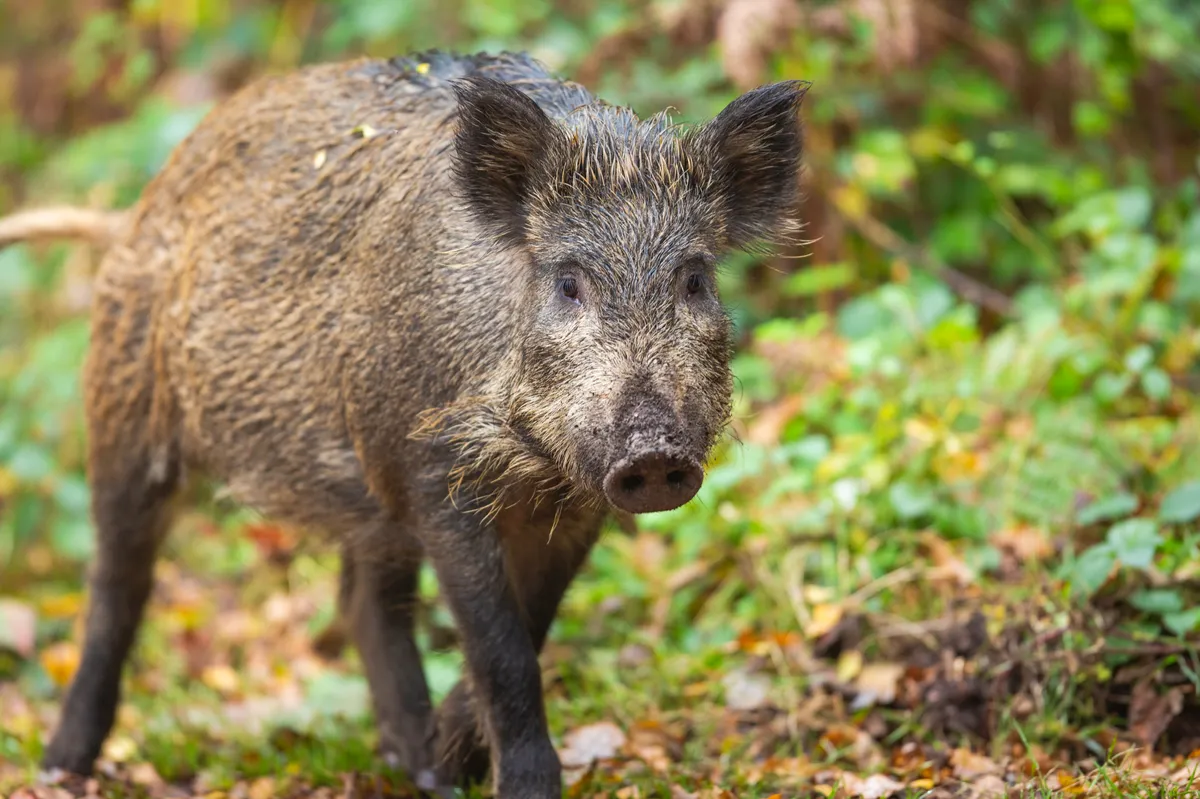
Autumn is a time of plenty for these wild pigs, which feast on fungi and fallen nuts and fruit. They even eat tannin-rich acorns, which are poisonous to cattle and sheep and distasteful to red (though not grey) squirrels. Classed as feral in the UK, boar are nonetheless native and their rootling and seed-spreading play a key part in forest ecosystems.
Today, they are restricted to a handful of wooded areas, notably the Forest of Dean. Rewilded estates, such as Bamff in Perthshire, often have traditional-breed pigs roaming instead.
White-throated dipper (Cinclus cinclus)

Uplands tend to empty of birds after the breeding season, before harsher weather sets in. Dippers, which are closely associated with rushing mountain torrents – the nature writer Mark Cocker describes the rotund birds as “river-sculpted like a pebble itself” – often simply move downstream.
For the next few months they can thus be seen beside wider rivers and around the shores of lakes and reservoirs, looking strangely out of place. Listen for their song: like thrushes, dippers are unusual in singing more or less year-round. It is far-carrying, with a rich and sweet quality.
The scientific name of the white-throated dipper, Cinclus cinclus, is an example of a tautonym, where the genus and specific name are the same.
European beech (Fagus sylvatica)
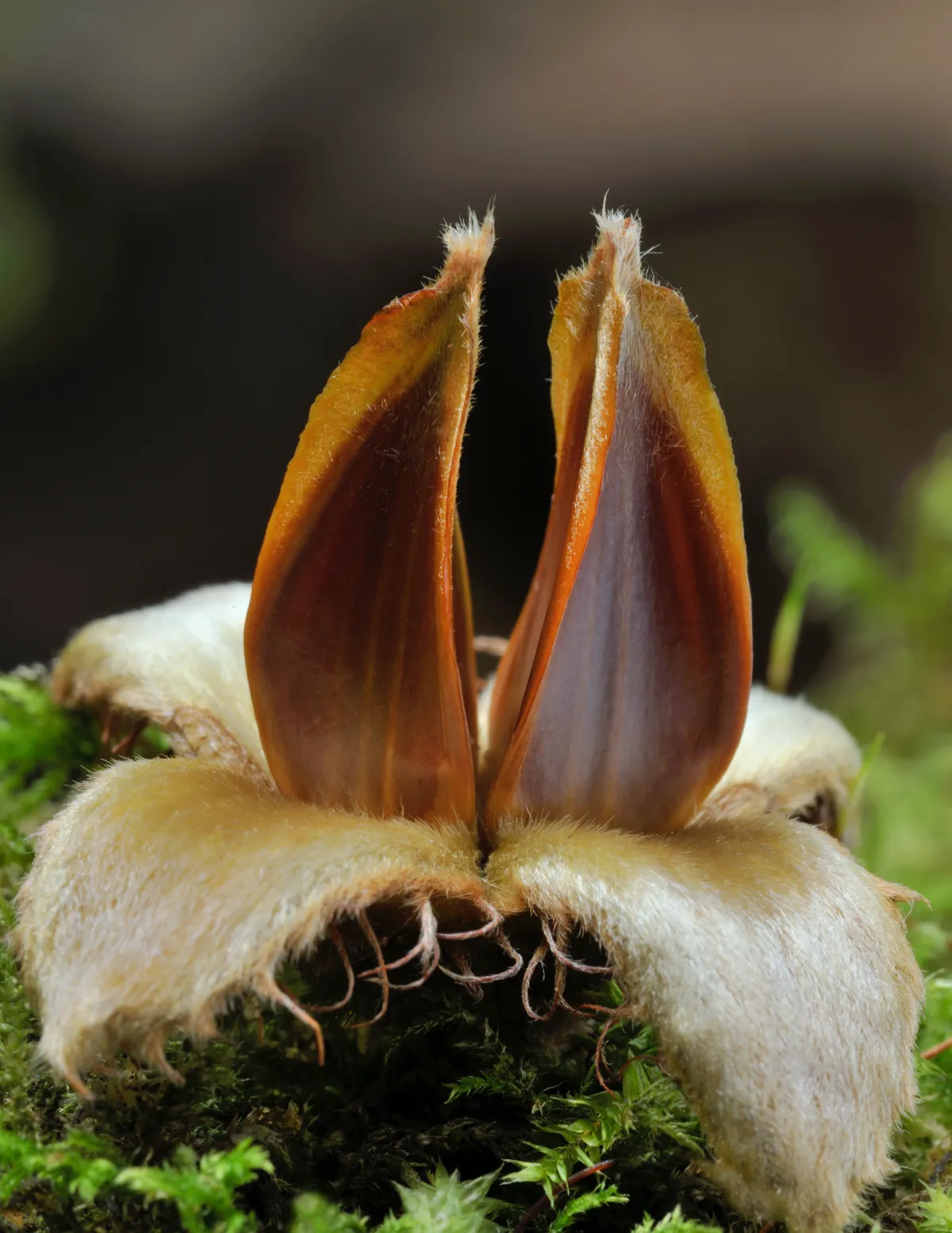
Go for an autumnal stroll under an avenue of beech trees, and you may find yourself walking over a crunchy carpet of beech nuts. Also called mast, they have a prickly husk that splits open underfoot to form a four-pointed star.
The nuts are devoured by squirrels, deer and birds such as finches, including the bramblings that visit Britain each winter. Wherever there are plenty of beeches, it is worth keeping an eye out for these orange-and-brown birds, which often mingle with flocks of chaffinches.
Tawny owl (Strix aluco)
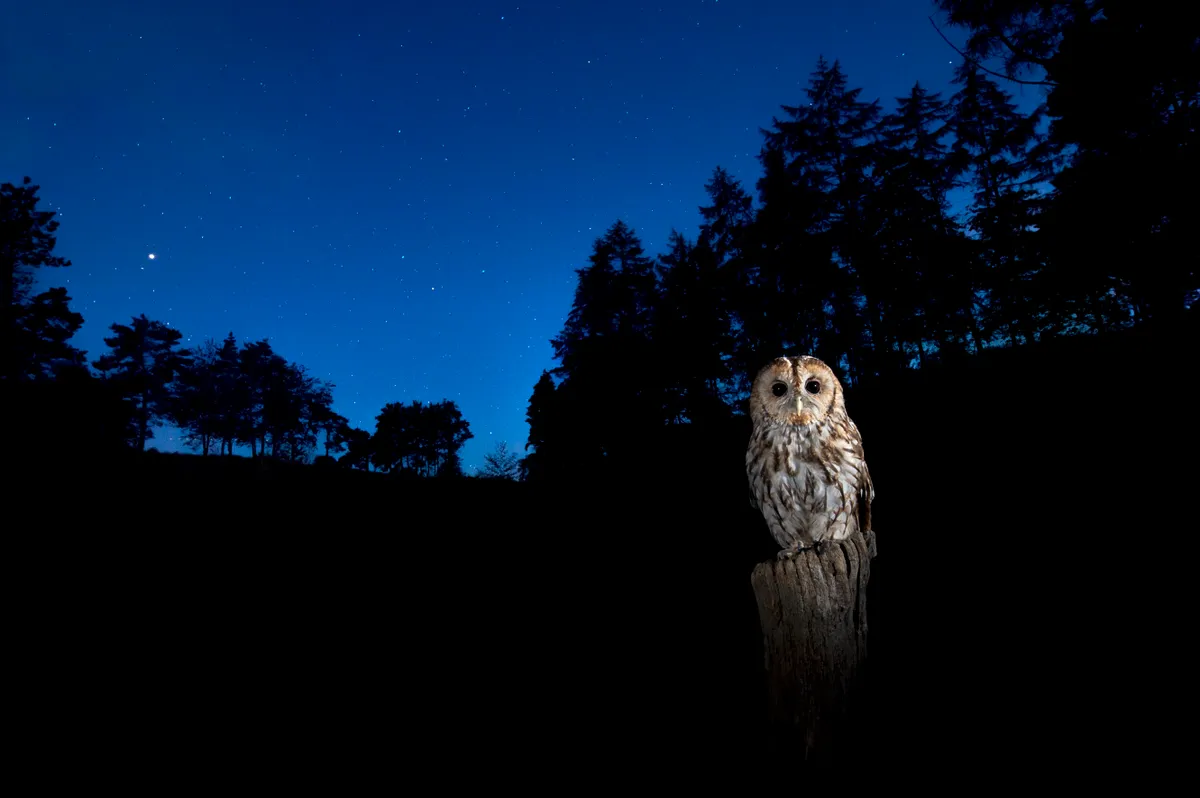
Anyone wanting to hear a tawny owl – or perhaps glimpse its shadowy form silhouetted against the last scrap of daylight – should go for a stroll on a pleasant autumn evening. October and November is when these ethereal birds really make their presence felt. They’re our most abundant owls, found even in suburbia and city parks, though absent from the island of Ireland.
Youngsters that fledged in spring are now searching for territories of their own, seriously ruffling the feathers of the neighbourhood’s resident owls. The result: a sudden surge in wavering hoots, shrieking ‘kee-wicks’ and an array of other screeches.
Tawny owls are tricky to survey, but some clever citizen science by the British Trust for Ornithology (BTO) has shone new light on their territorial behaviour. Data gathered from over 10,000 volunteer ‘owlers’ shows that, for your best chance of a magical encounter, you should head out at sundown on a warm, dry evening with a clear sky and full moon.
You’re much less likely to strike it lucky in cooler, darker conditions, especially later at night or if it’s wet. But in October 2020, the odds will be stacked in your favour, as the month is bookended by two full moons, something that happens every two or three years.
Learn more about tawny owls and other British owl species:
Small-spotted catshark (Scyliorhinus canicula)

As seaweed dies back and rougher seas return, you’re in with a chance of beachcombing gold. Mermaid’s purses are the empty, leathery egg- capsules of sharks, skates and rays, with curly tendrils at the corners, which attached the developing cases to seaweed underwater.
You might spot purses of a dozen or so species, but those of small-spotted catsharks – often known as lesser-spotted dogfish – are among the most frequently found on UK beaches. Soak your dried-out egg-case in water, so it regains its shape, as this will help you to identify the species.
Redwing (Turdus iliacus)
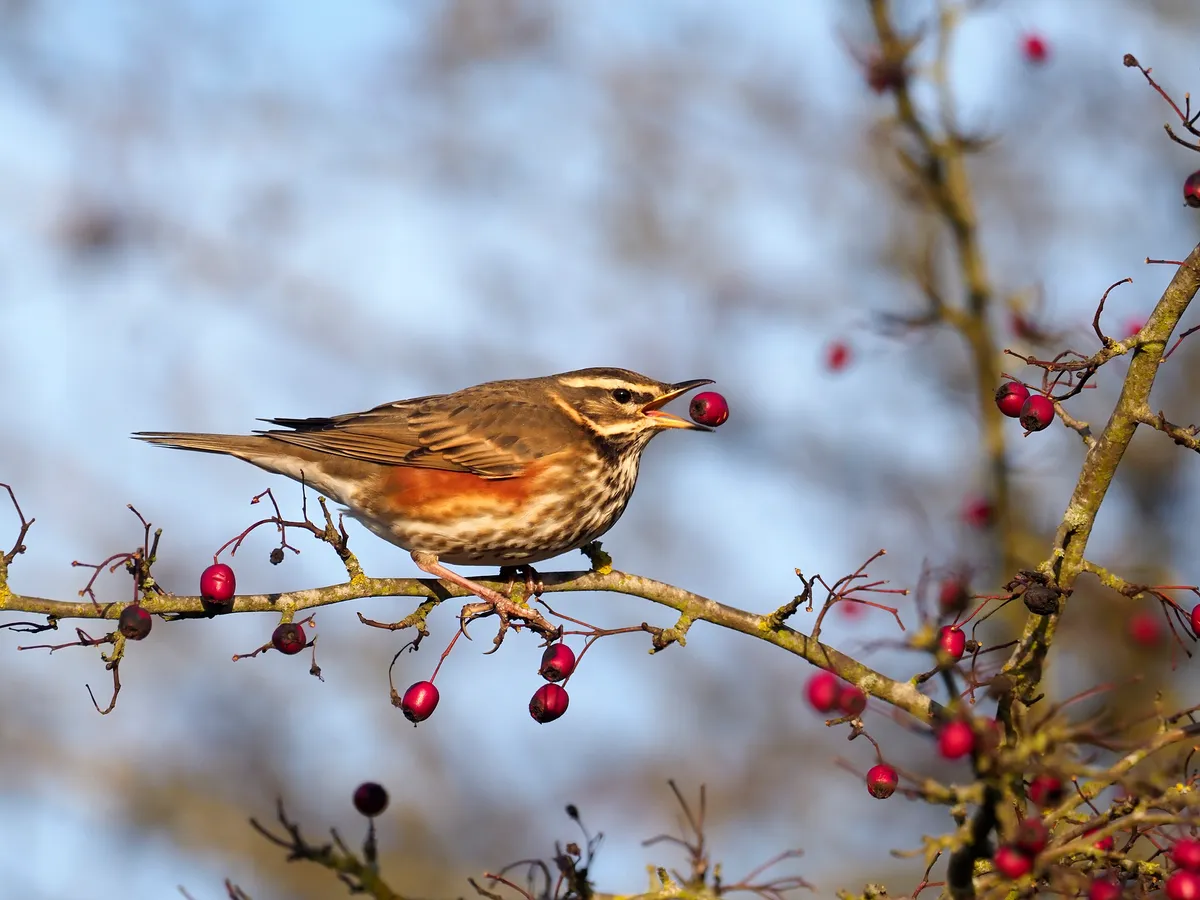
One of the surest signs of autumn is the arrival of ‘winter thrushes’ – fieldfares and redwings – from northern Europe and Iceland. The tired migrants usually have food on their mind, so keep checking berry-laden trees and shrubs, especially mountain ash, hawthorn and sea buckthorn.
But often you will hear rather than see your first redwing of the season, because this is a nocturnal migrant and flocks make frequent ‘seep seep’ calls as they stream overhead in the darkness. Though thin and reedy, these contact calls travel well, even in city centres.
Learn more about thrushes:
European badger (Meles meles)
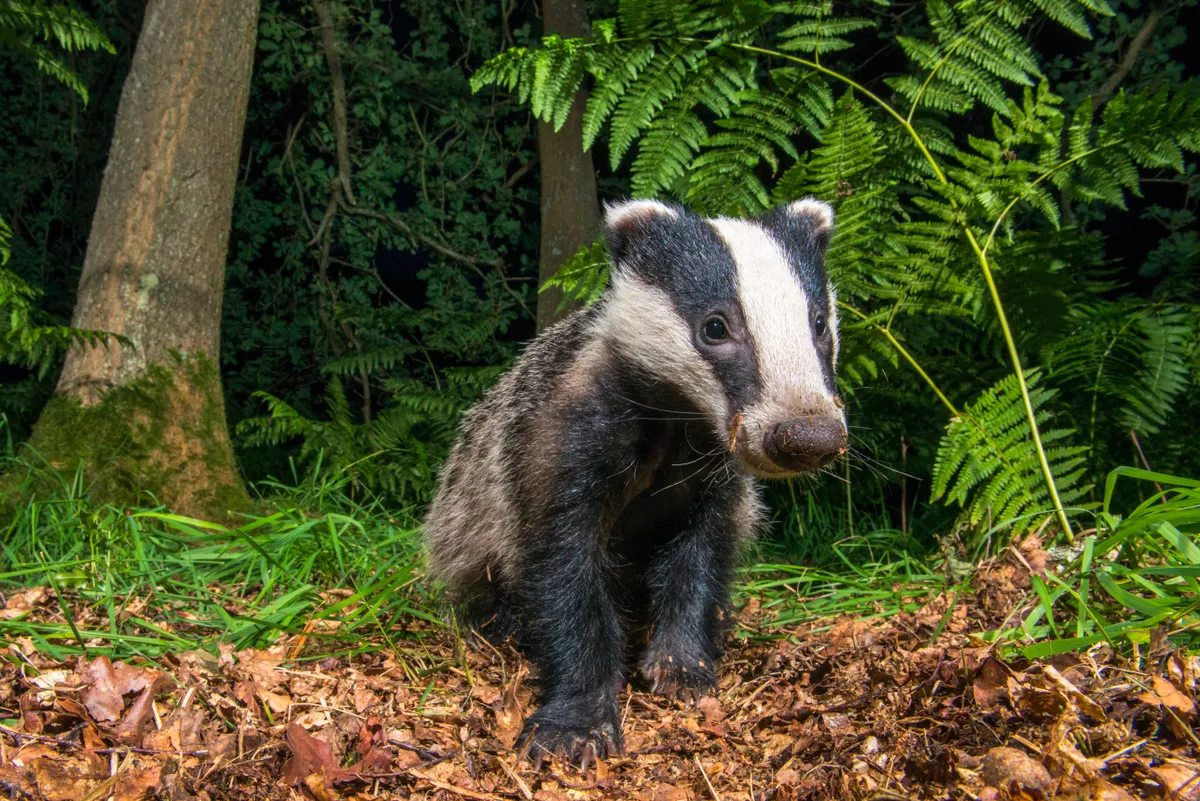
Badger spend autumns gorging on everything from the last of the year’s maize (a real favourite, nowadays) to earthworms, acorns and beech mast.
In his classic 1948 monograph on the species, The Badger, schoolteacher- naturalist Ernest Neal describes how the snuffling omnivores eagerly “root about like a pig for hidden delicacies”. By winter, healthy badgers should weigh a third to a half more than in summer. But milder winters mean they are less dependent on fattening up than they once were, as most nights they can still leave the sett and find food.
The scientific name of the European badger, Meles meles, is an example of a tautonym, where the genus and specific name are the same.
Bank vole (Myodes glareolus)
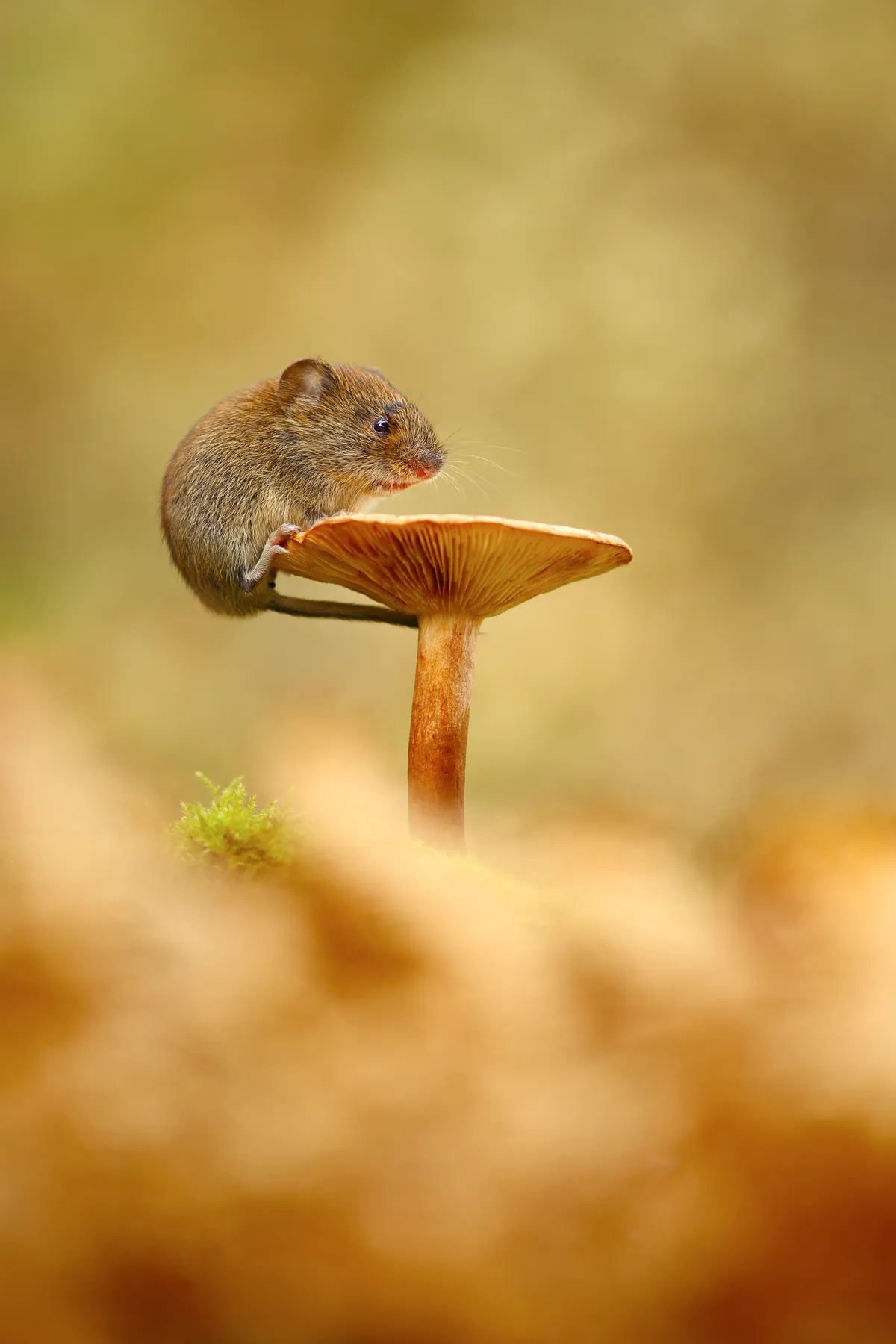
Resembling tubby mice, bank voles have tails so short you don’t always notice there is one. They sit squarely at the bottom of the pyramid of life, living off a wealth of woodland and hedgerow plants, and sustaining a host of predators in the process. With an estimated 27 million bank voles in Britain in a typical year, their ecological significance is considerable.
In October, their main occupation is gathering hazelnuts and seeds for their winter stores. A recent study in Germany found that voles with bold personalities will roam further than more timid individuals.
Learn more about rodents in the UK:
Mountain ash (Sorbus aucuparia)

Four hundred years ago, in October 1620, the gardener and diarist John Evelyn was born. He wrote the first modern book on trees: Sylva, or A Discourse of Forest Trees, published in 1664. Most British species get a chapter each, including the mountain ash, referred to as “quick- beam” or “witchen”.
Evelyn praised its slender stature, useful timber and fine, smooth bark. Mountain ash, also known as rowan, looks its best in early autumn, when its heavy sprays of berries paint our uplands, rough ground and roadsides bright red. Birds, particularly thrushes, love them.
Green shieldbug (Palomena prasina)
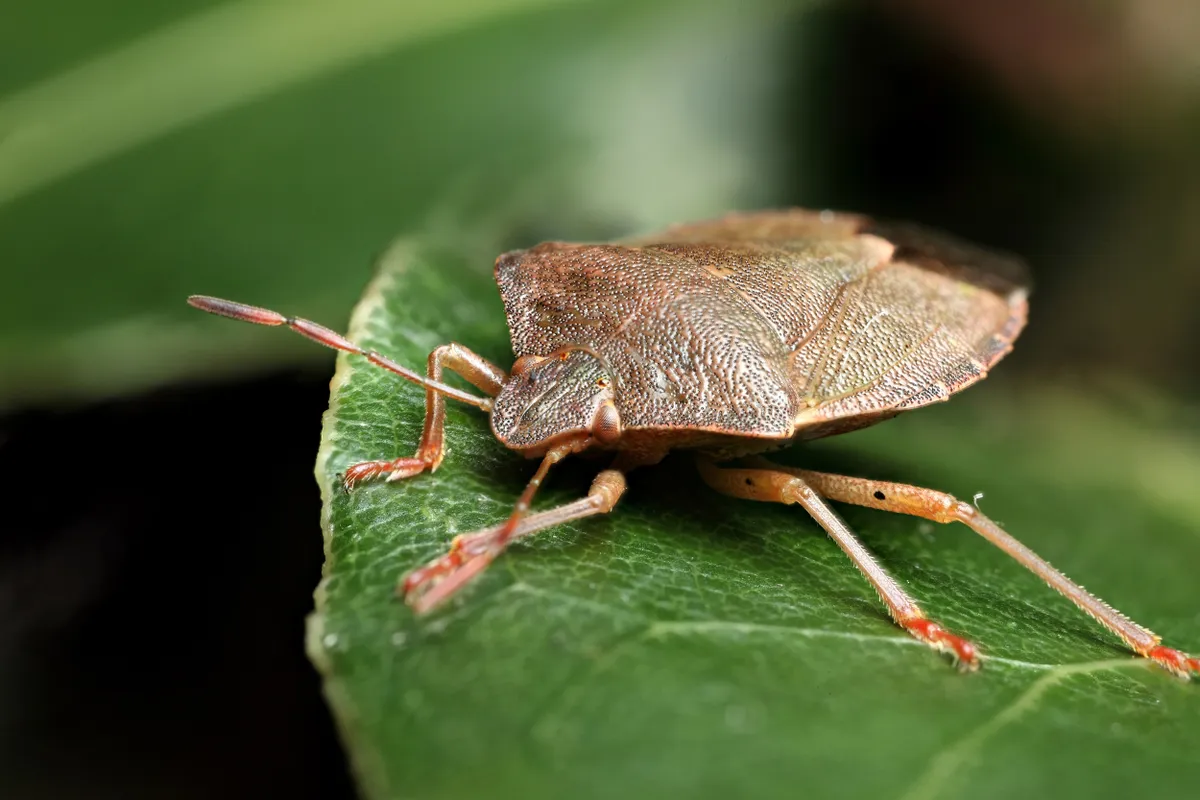
Insects survive the British winter as eggs, larvae, cocoons or hibernating adults. Shieldbugs overwinter as adults. But to do this, they first undergo a colour change. Throughout summer, green shieldbug nymphs are chiefly emerald-green to match the foliage.
The fresh adults they develop into are also green, but come autumn, turn a dull purplish-brown to blend in among dead leaves and bark. Next spring, the bugs reinstate their bright green former hues, mate, then die – their life-cycle complete.
Goldcrest (Regulus regulus)

Joint winner of Britain’s smallest bird (alongside the firecrest), the goldcrest is a familiar resident wherever conifers grow, though it also frequents mixed and deciduous woods. In autumn – particularly October – numbers are swollen by immigrants from northern Europe and Russia.
Incomers make landfall on the East Coast, sometimes in the hundreds, their presence typically revealed by high- pitched, sibilant contact calls. For birds that weigh no more than a 10-pence piece, crossing the North Sea expends significant energy resources. Tired arrivals flop into the nearest shelter they can find.
The scientific name of the goldcrest, Regulus regulus, is an example of a tautonym, where the genus and specific name are the same.
Scarlet waxcap (Hygrocybe coccinea)
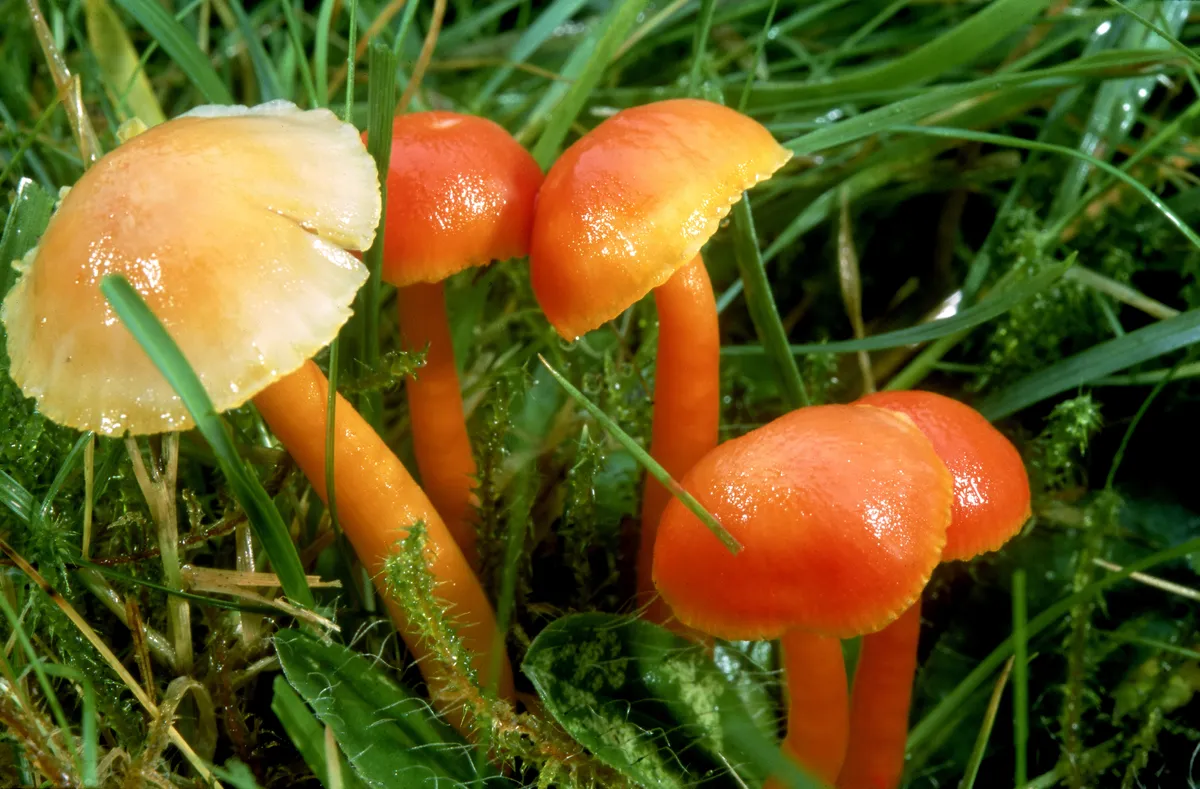
Unabashedly exotic, waxcaps are to fungi what orchids are to plants. These extroverts also hold importance for conservationists, being indicators of mushroom-rich grassland that has avoided being agriculturally ‘improved’ by chemicals.
The name ‘waxcap’ refers to the texture of the cap. Typically waxy or slimy, in the case of this species it is greasy. A rainbow of 20- odd species flourishes across the British Isles, with scarlet waxcap among the most common. October is the peak month for fruiting.
Learn more about mushrooms:
Fallow deer (Dama dama)
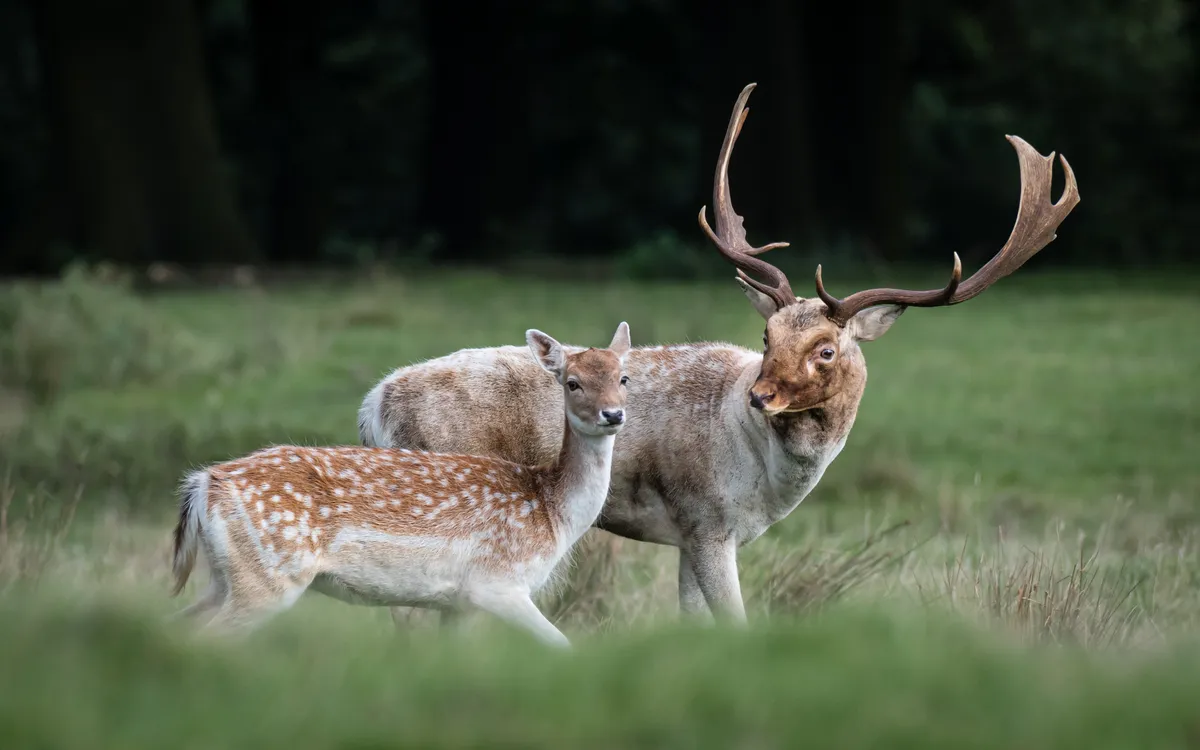
Pained groans resound through open woodland in autumn: a fallow deer rut. Bucks usually rut separately, each bellowing from hard-fought display grounds, though sometimes they will muster, seeking to attract females collectively.
The most widespread and common of Britain’s four naturalised deer, this species is easily recognised. The broad, flattened ‘palmate’ antlers of mature bucks are unique, and the white rear of both sexes is bisected by a long, largely black tail.
The scientific name of the fallow deer, Dama dama, is an example of a tautonym, where the genus and specific name are the same.
Bearded tit (Panurus biarmicus)
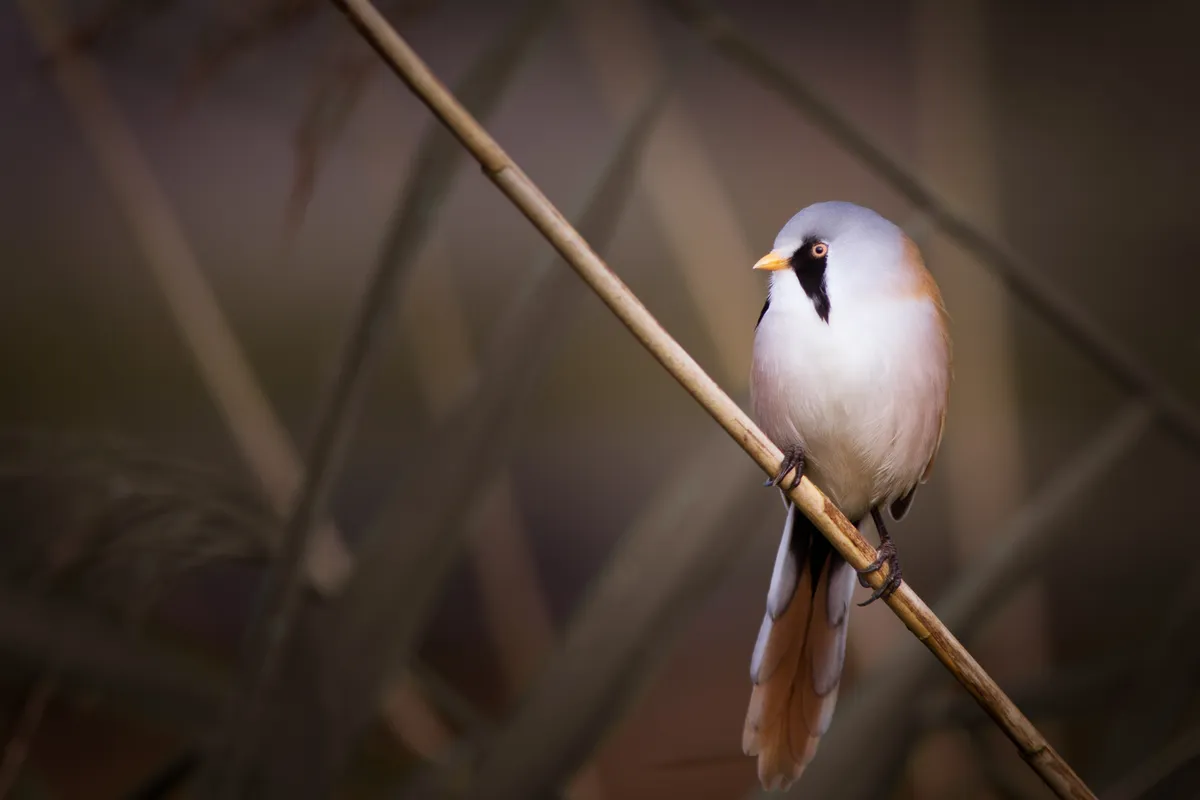
An attractive yet inaccurately named bird, bearded tits are neither bearded nor a tit. The males are actually moustached (think wrestler Hulk Hogan) and the species’ closest relatives – surprisingly – are now considered to be larks.
October is prime time for watching bearded reedlings (as they are properly known) in their favoured reedbeds. With breeding complete, families become less secretive and flock together. ‘Beardies’ also change their diet, switching from insects to reed seeds. To aid digestion, they take in grit – often from grit trays installed by savvy reserve wardens.
Buckthorn (Rhamnus cathartica)
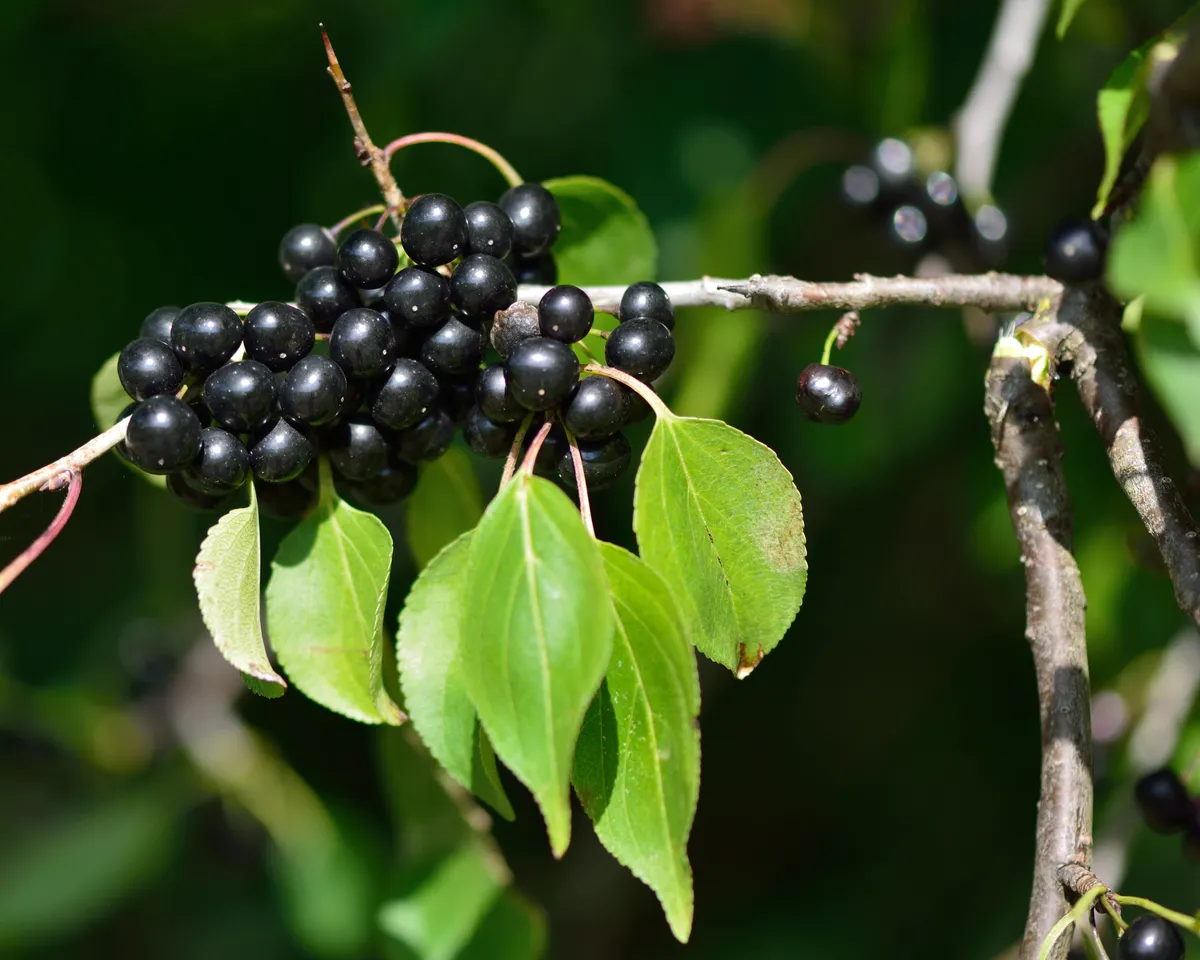
This small tree’s full vernacular name is ‘purging buckthorn’, so you would be well advised to exclude its berries from your autumnal foraging trips. Buckthorn fruits, which ripen this month to resemble a diminutive black grape, are an intense laxative.
They are best left to birds, which consume them regardless of any ill effects. Buckthorn grows in hedgerows, scrub and woodland, and is the principal foodplant of brimstone caterpillars.
Oak bush-cricket (Meconema thalassinum)
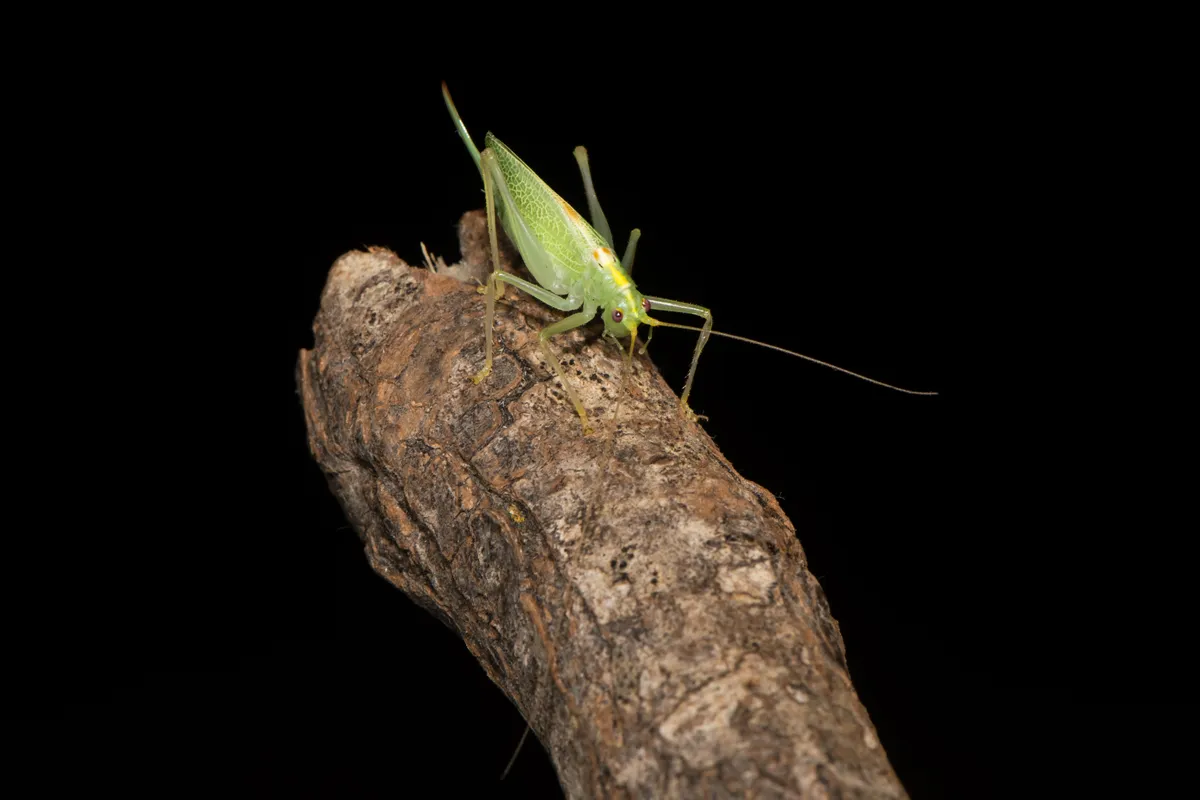
Amid a group of insects usually associated with providing the soundtrack to our summer afternoons lounging in meadows, the oak bush- cricket is an outlier. Not only is it exclusively nocturnal, but no other orthopteran (grasshopper or cricket) is as wont to enter human habitation.
Attracted by bright lights, this long-winged, emerald insect is so readily found inside houses that it has earned itself the moniker ‘bathroom bush-cricket’. Adults survive well into November, so leave the bathroom window ajar this month to try to attract a visitor with twitching antennae.
Short-eared owl (Asio flammeus)
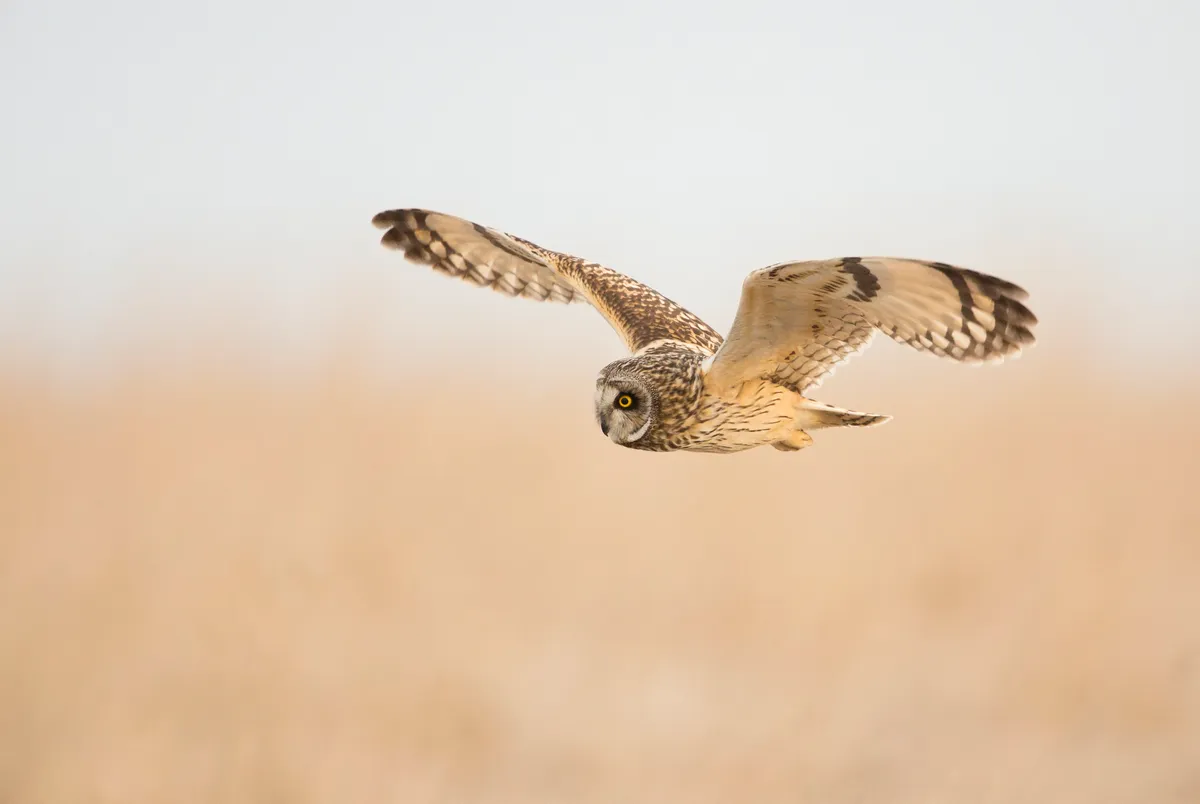
With long wings beating slowly, these owls bring to mind large, pale moths. Seemingly without any effort, they fly low over rough grassland or saltmarsh, patiently tacking back and forth as they search for voles.
In her book Owl Sense, Miriam Darlington coined the term ‘earsight’ to describe the way in which owls such as these hunt using 3D mental maps built entirely from sound. When a ‘shortie’ finally hears the faint rustle of tiny paws, it twists suddenly, then drops like a stone to snatch its hidden prey. Its talons may grip fur before it even sees the meal.
Around 1,400 pairs of short- eared owls nest in Britain, mostly in Scotland and northern England, though numbers fluctuate naturally according to the boom-and-bust cycle of vole populations. In October many of our birds head to coasts for the winter, while the rest migrate south as far as the Mediterranean.
Meanwhile, more of the owls are arriving from northern breeding grounds in Scandinavia. It’s impressive to think that these beautiful birds, with their floaty flight style, are capable of crossing the churning brown waters of the North Sea.
Learn more about owls in the UK:
Silver Y moth (Autographa gamma)
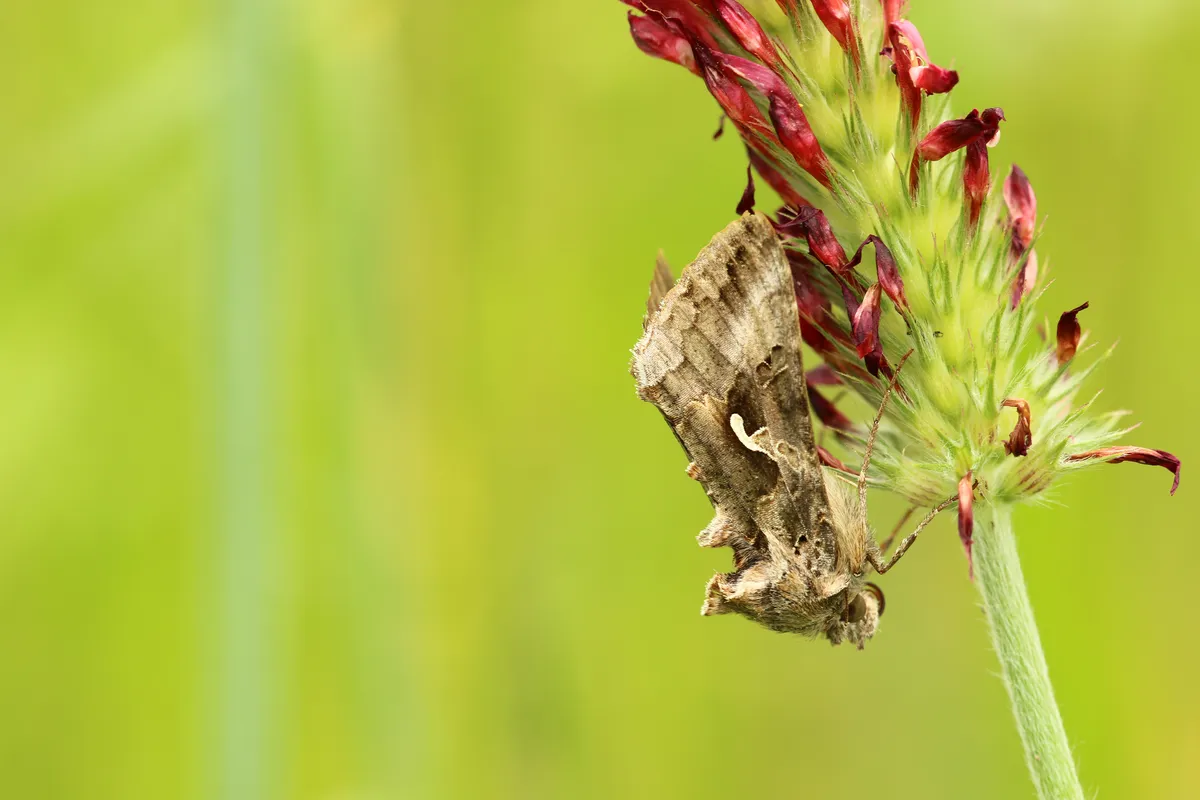
When mosquitoes invaded the England vs Tunisia match in FIFA World Cup's in Russia in summer 2018, it wasn’t the first time insects had made their presence felt at a televised sporting event. The silver Y enjoyed its moment in the limelight when one landed on Portuguese striker Ronaldo during the final of UEFA Euro 2016.
This abundant migratory moth with its diagnostic silver squiggle travels in vast swarms in some years, when adults hatched in Britain are boosted by large numbers from the Continent. Look for them in most habitats, including parks and gardens – as well as sports fields.
Lesser horseshoe bat (Rhinolophus hipposideros)
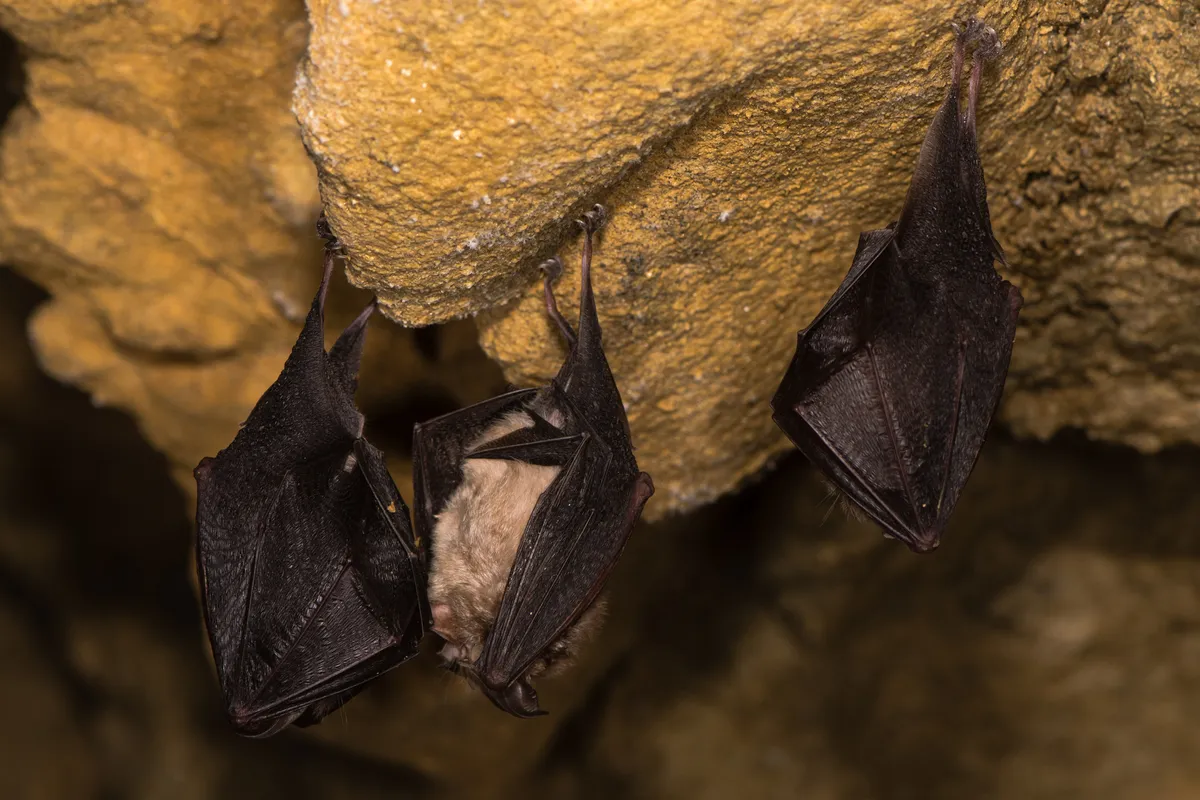
Halloween invariably turns public attention to bats, yet most stories about these mammals are far from the truth. For one thing, the popular image of bats hanging upside-down, wings wrapped around their bodies like pashminas, is misleading.
Only two British bats do this – the greater and lesser horseshoes, named for their strange ‘nose leafs’ (flaps of skin) that aid echolocation. Lesser horseshoes are a speciality of south-west England, Wales and western Ireland, and this month enter their hibernation roosts. They favour cellars, tunnels and caves with consistently cool air.
Sycamore (Acer pseudoplatanus)

Naturalists are often sniffy about the sycamore owing to uncertainty over its status in Britain. The late, great dendrologist Oliver Rackham pointed out that the lack of Celtic and Saxon names for this European tree suggests it did not grow here in ancient times.
But debates about whether sycamore is native have made no difference to the enjoyment of generations of children playing with its winged seeds in autumn. Sycamore ‘helicopters’ are more bent than those of field maple – the Woodland Trust describes them as more like “Frank Zappa’s moustache” than the “Clark Gable” of field maple.
Teal (Anas crecca)
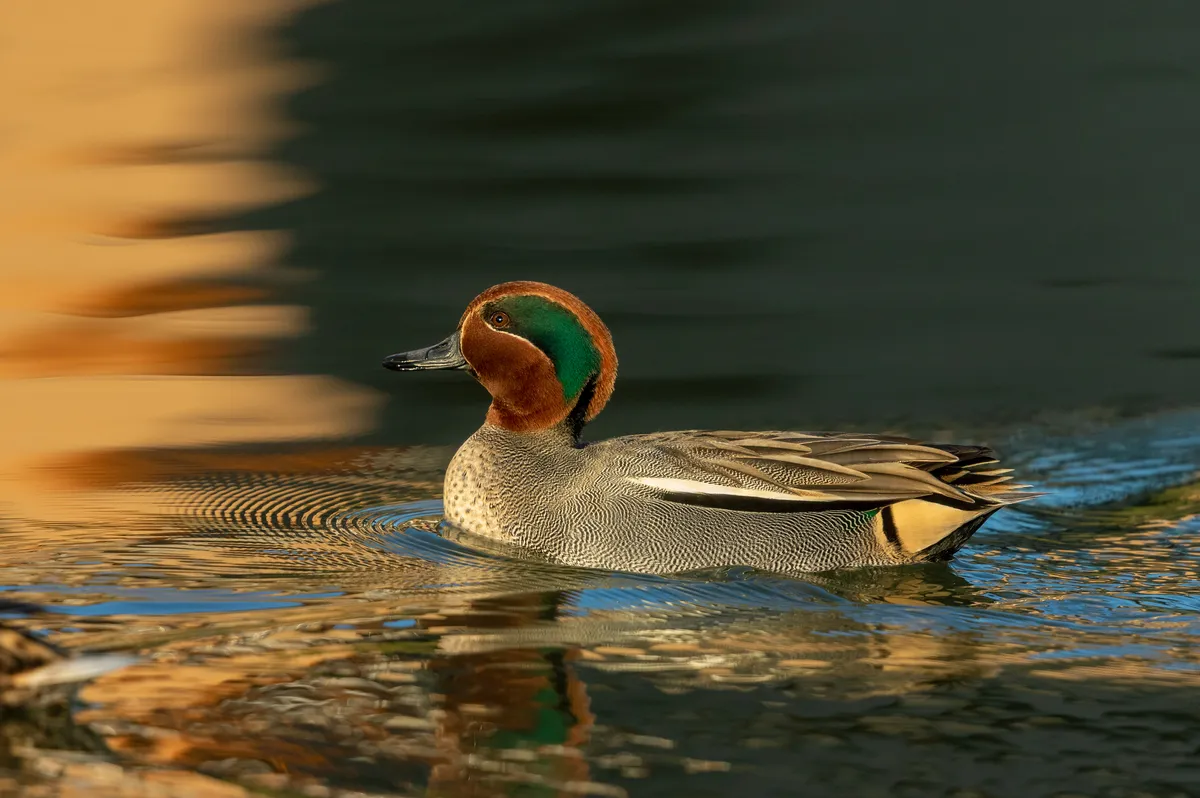
Male ducks spend midsummer looking rather dowdy. Before moulting their all- important wing feathers, which renders them flightless, the birds adopt a brown, female-like plumage known as ‘eclipse’ to hide them from foxes and other predators.
But now their moult is complete and the drakes are once again resplendent. Male teal in fresh breeding colours are some of our most handsome wildfowl – bottle- green eye patches provide a stunning contrast with chestnut-brown heads. They are also the smallest British ducks, weighing only a third or quarter as much as the much chunkier mallards.
Learn more about ducks:
Guelder rose (Viburnum opulus)
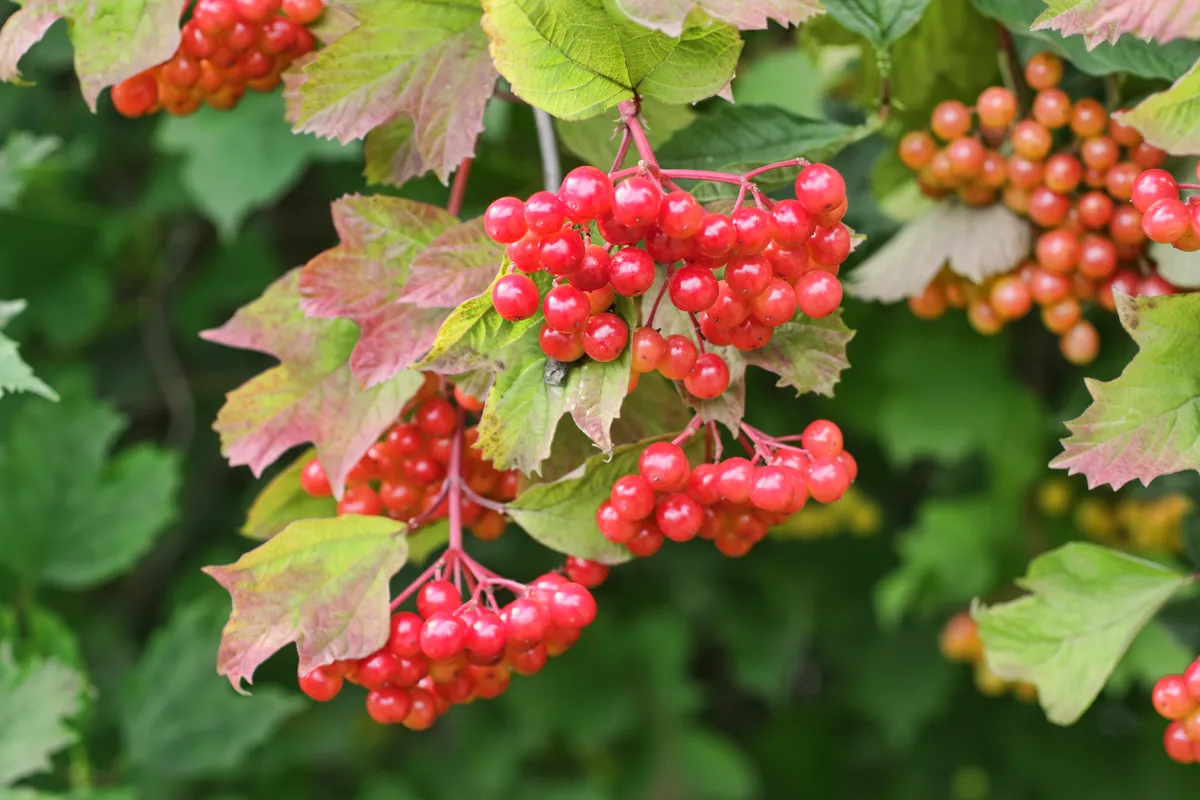
Though much less well known than rowan (also known as mountain ash), the guelder rose arguably bears the brightest fruit. This small tree or shrub grows in hedgerows, scrub and woodland edge, reaching a few metres tall, and is widely planted too.
It is native to the British Isles, but, curiously, is named after the region of the Netherlands where an ornamental variety was first grown. The scarlet berries, which hang in plump clusters, are enjoyed by bullfinches, making a popular subject for wildlife photographers.
Sea trout (Salmo trutta)
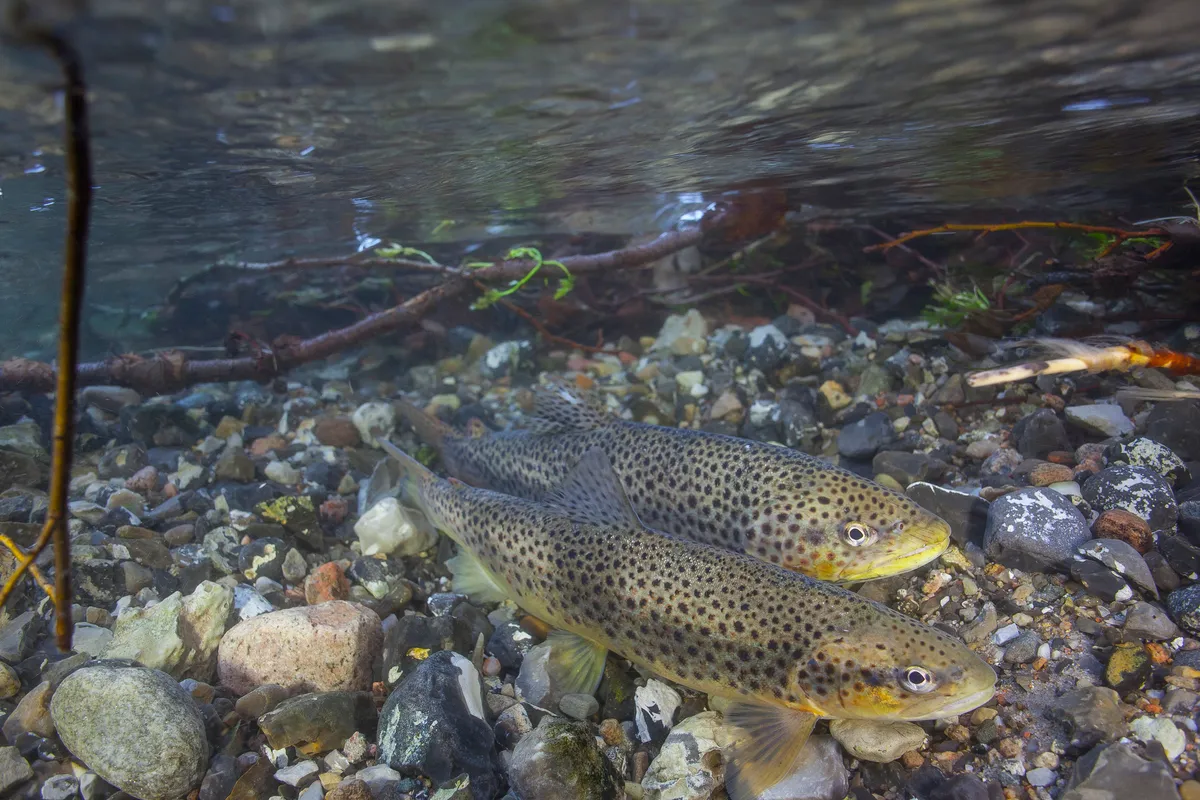
Atlantic salmon aren’t the only fish heading upstream to spawn in gravelly riverbeds at this time of year – there are sea trout, too. Technically the same species as the brown trout that remain in fresh water, these are muscular, powerful fish.
Like salmon, they migrate mainly at night, guided by a combination of chemical and magnetic cues. As Paul Evans writes in his book How to See Nature, their “whole physical being is a sensory organ”. Each fish is so sensitive to its aquatic environment that it can even “taste the rinsing of human hands in the water”.
Pink-footed goose (Anser brachyrhynchus)
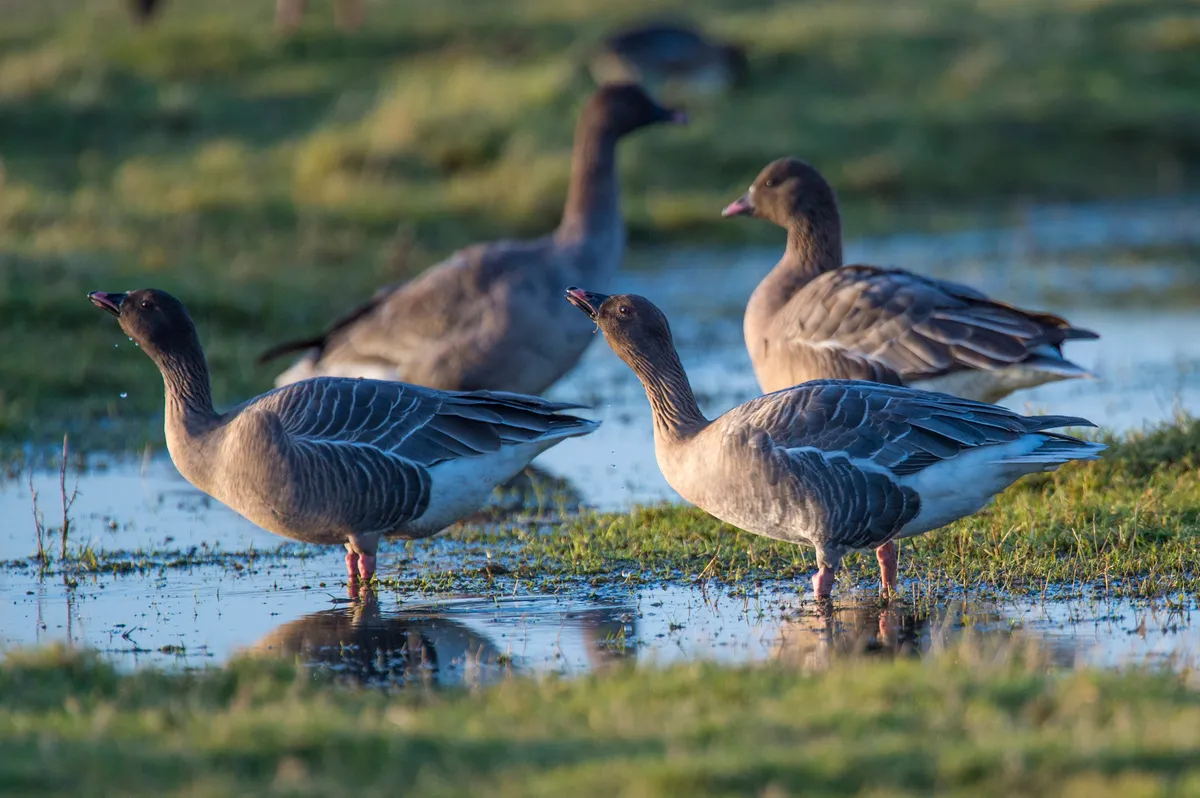
90% of the world’s pink-footed geese – about 375,000 birds – visit Britain every year. Seasonal refugees from Iceland and Greenland, they begin flocking to northern Scotland in October, then spread south to the Solway Firth, Lancashire and North Norfolk, staying until March. Here the living is easy, thanks to our milder winters and fields full of potatoes and sugar beet, which ‘pink feets’ love.
At dusk, as regular as clockwork, their vast skeins head out to the safety of fox- free coastal mudflats to roost, returning inland at dawn to feed. Richard Mabey described the daily spectacle in one of his 2008 columns for BBC Wildlife Magazine: “The endless scrolls of birds, the ebb and flow of that ancient cackle, that celestial static, fill the sky, fill your head. I’ve more than once involuntarily dropped to my knees under them.”
Mabey appeared in the magazine for over 25 years, and he returns to the magic of bird migration in his book, Turning the Boat for Home. Perhaps, he wonders, migration touches us so profoundly because it has cultural, or even genetic, echoes of our nomadic origins in Africa. “Do we still have this restless itch to move on somewhere deep in our own biology?”
Comma butterfly (Polygonia c-album)
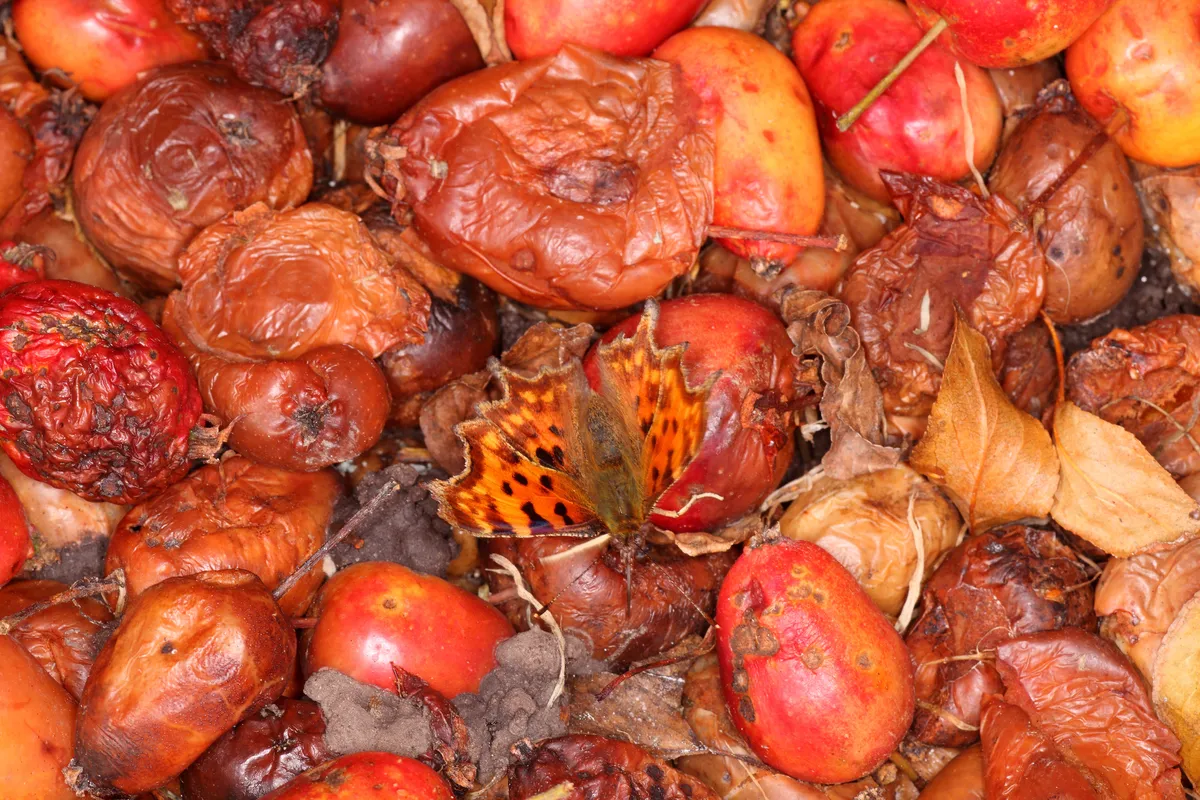
With camouflaged underwings and a ragged silhouette, the comma does a fantastic impression of a torn, dead leaf, which is usually enough to escape the attention of hungry birds.
This species can be seen on sunny days well into November, and any individuals active now will be feeding up, ready for their winter hibernation. You may spot the butterflies sipping sugar from the last few bruised blackberries, or from fallen apples and plums.
Firecrest (Regulus ignicapilla)
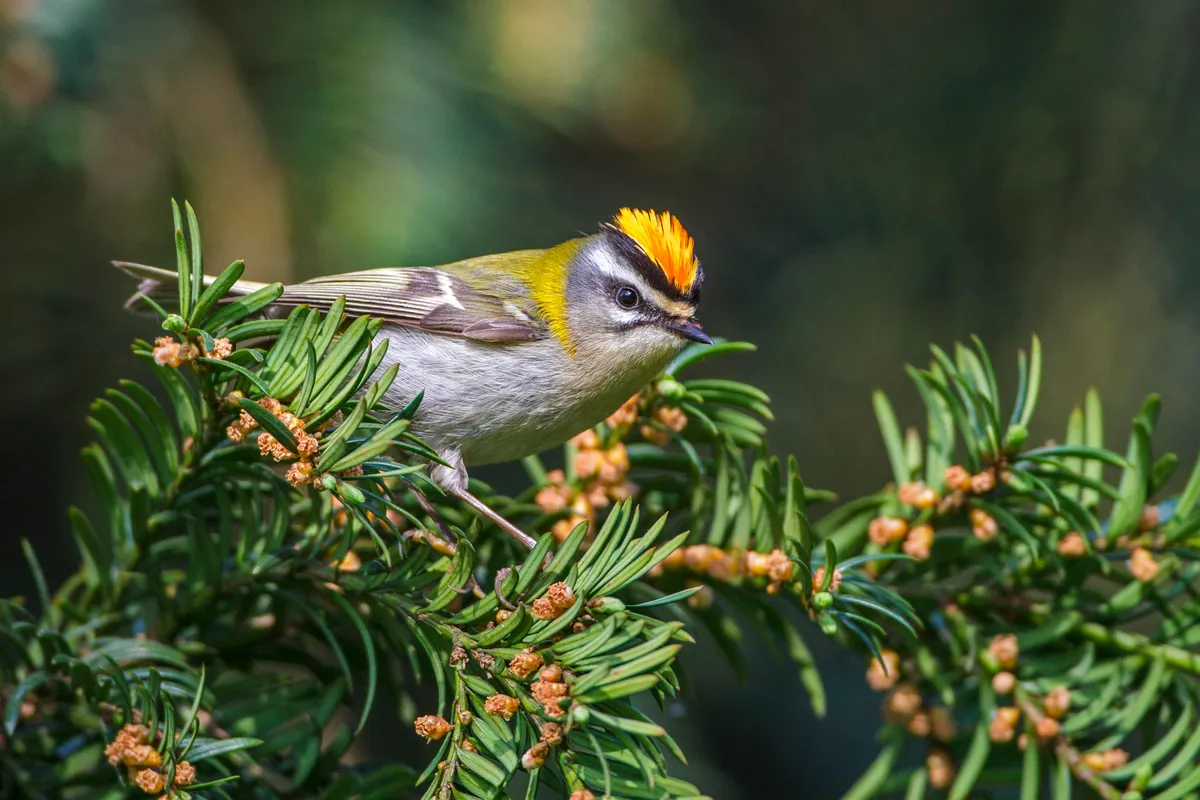
Two ‘crests’ – fire and gold – vie forthe title of smallest British bird. Both species weigh 5–7g and measure about 9cm. In comparison, a blue tit weighs twice as much. Firecrests are hyperactive sprites, moving through foliage non-stop and frequently hovering in mid-air to pick off tiny insects and spiders.
They seem particularly fond of ivy-covered tree trunks. But they’re far scarcer than goldcrests, with just 550 breeding pairs in the country. October, when numbers are swelled by autumn migrants, is your best chance of a sighting.
Large red slug (Arion rufus)
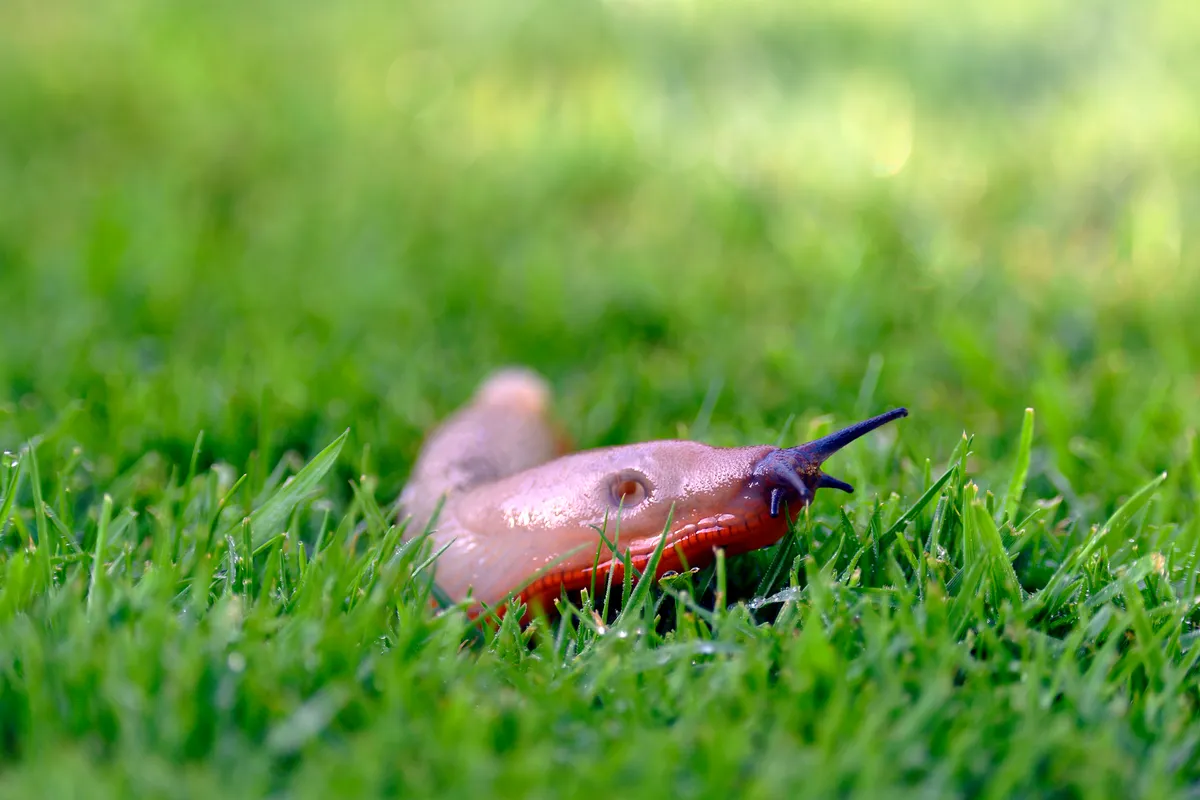
Struggling to appreciate slugs? The experience of commuters in Japan may help you put the loss of a few plants in perspective. A couple of years ago, trains ground to a halt when a wayward slug short- circuited the country’s famously efficient rail system!
If you’re prepared to take a closer look, Britain’s slugs are beautiful, and not all black or sludge-grey. Take the large red slug, an abundant garden species. Its coloration varies from ochre to tangerine, with a brighter ‘go-faster’ stripe around its muscular foot. This month, its population reaches one of two seasonal peaks (the other is in spring).
Red deer (Cervus elaphus)
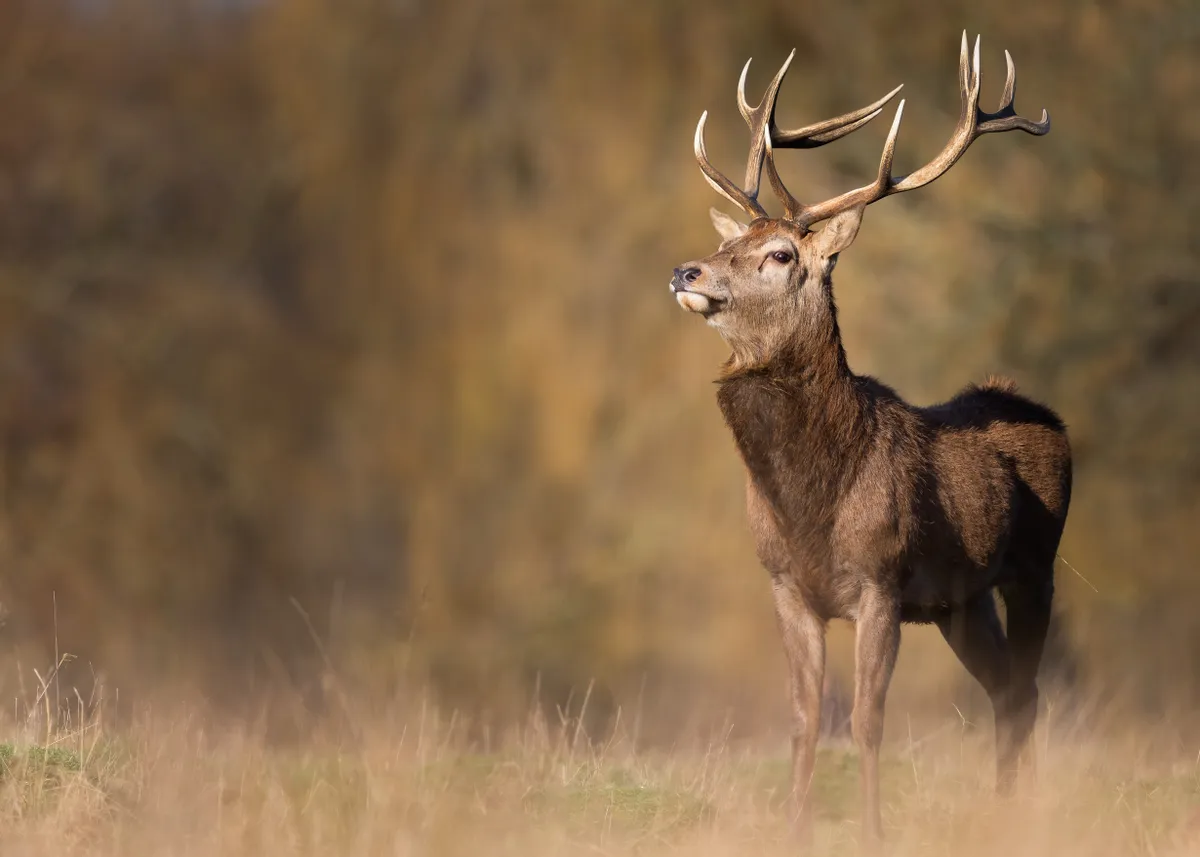
Pumped with testosterone, red deer stags are now devoting all their energy to competing for hinds. It is a winner-takes-all system, as only the victors get to assemble a harem, which they then guard day and night.
The dramatic displays are mostly about sound (a sort of constipated grunting) and visuals (vegetation thrashing and side-by-side strutting) rather than serious combat. Nevertheless, the rut takes its toll: within a few weeks, stags lose a quarter of their body weight. Keep a respectful distance from the action, especially if you’re trying to take photographs.
Batman hoverfly (Myathropa florea)
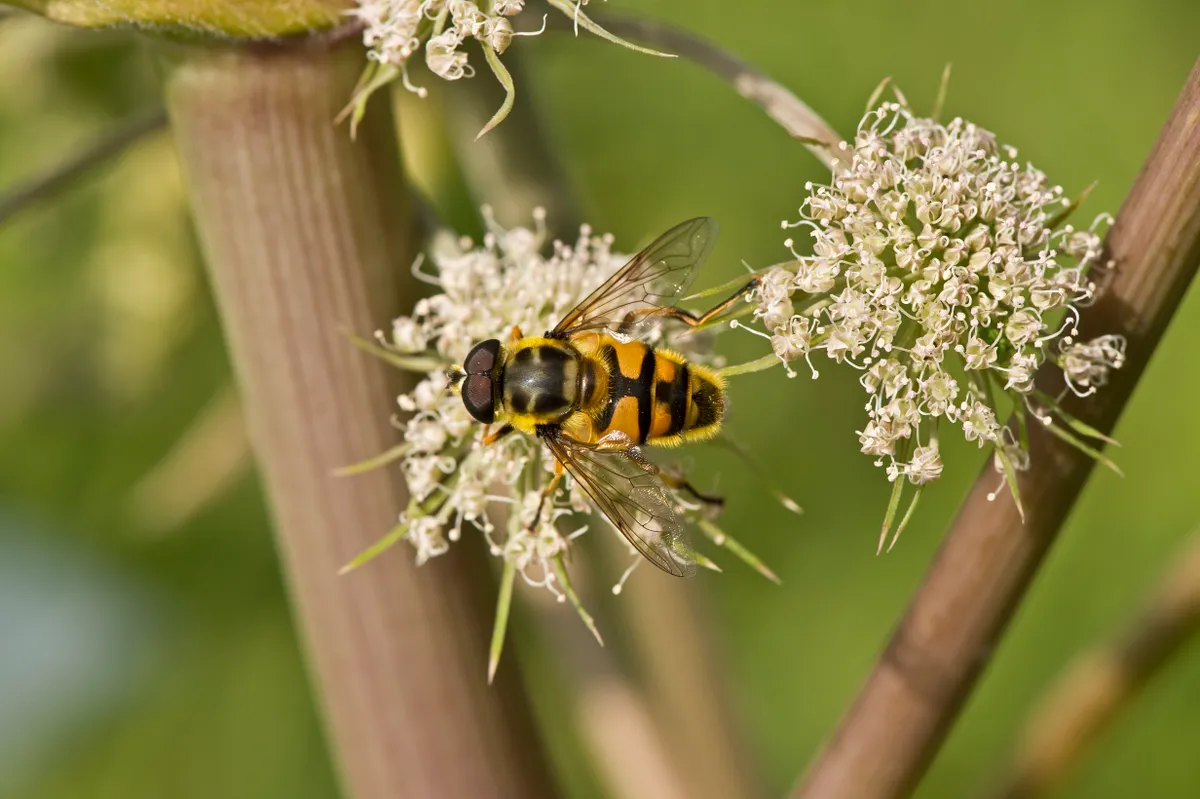
October was once ‘Gort’, the Pagan month of ivy. Our ancestors realised that ivy flowers – curious, greenish-white clusters that erupt at this time of year – are an important source of life when most other flowers have long since died back.
Usually the blossom is alive with grateful hoverflies and other insects, making it a valuable garden plant. A common species to look for is Myathropa florea. It is also called the Batman hoverfly after the distinctive black markings on its thorax, or middle section.
Beefsteak fungus (Fistulina hepatica)
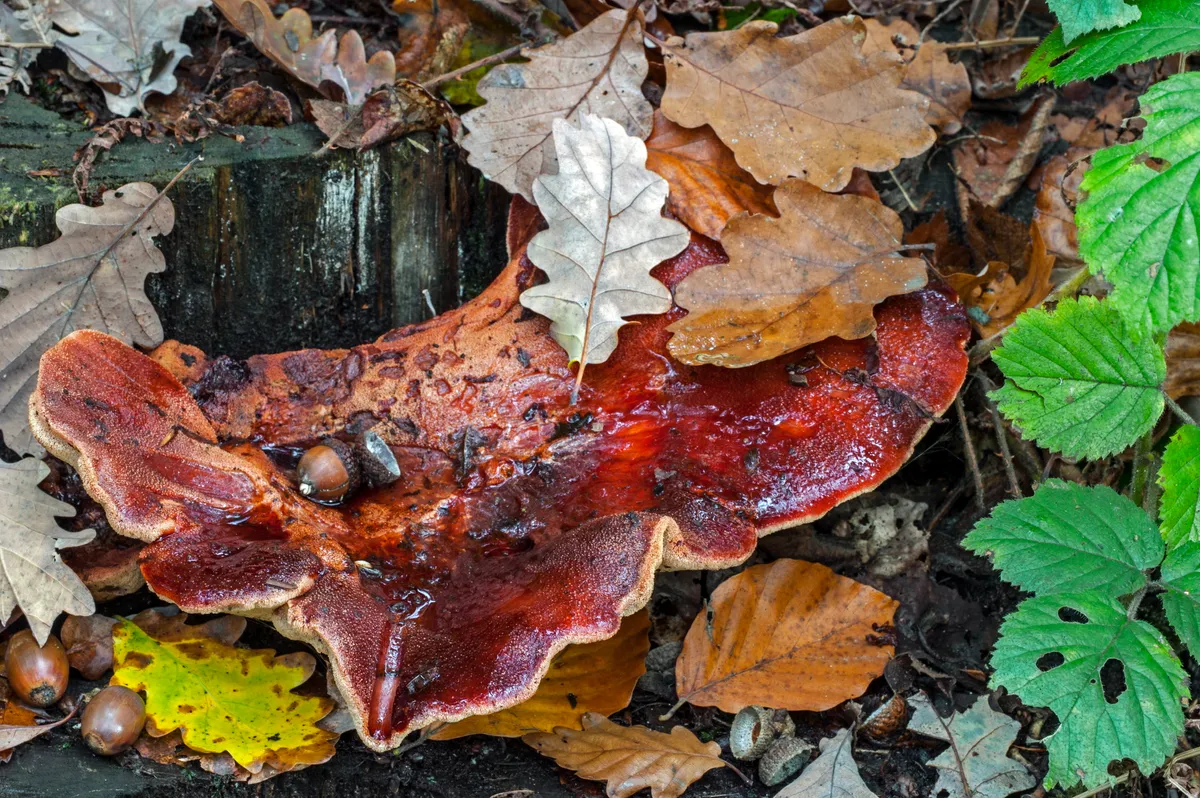
Of all the fungi named after foods, this is perhaps the most striking. It’s a bracket fungus that sprouts from deciduous trees, typically oaks, and, when young, resembles a peach-coloured sponge sticking out of the bark.
As the fungus ages, it takes on the shape of a tongue or slab of raw meat, and its surface oozes drops of thick, red liquid that look like blood or strawberry jam. Though technically edible, it doesn’t taste anything like steak. But, remember to take advice from an expert.
Main image: European badger cub in oak woods, Ashdown Forest, Sussex, UK. © James Warwick
